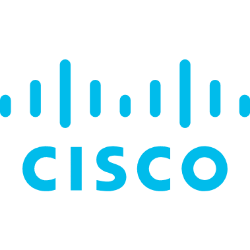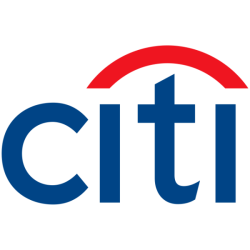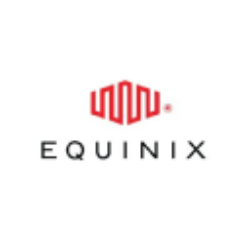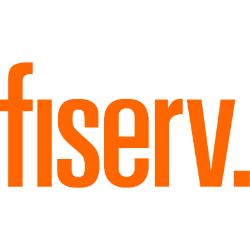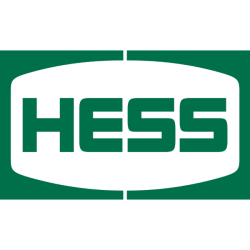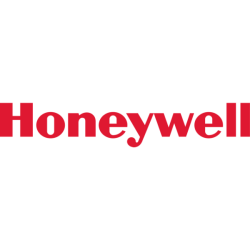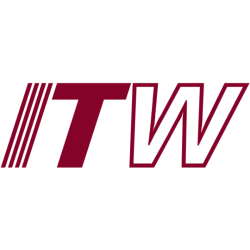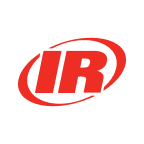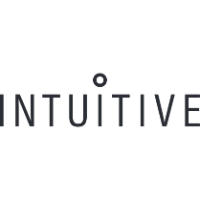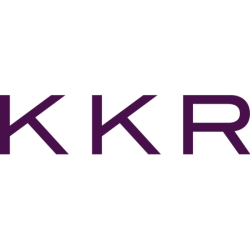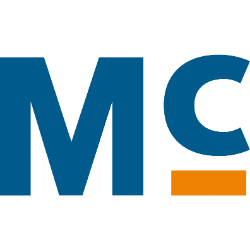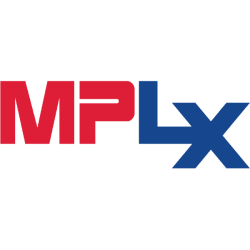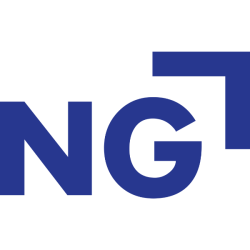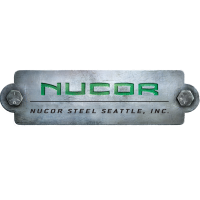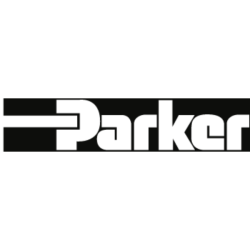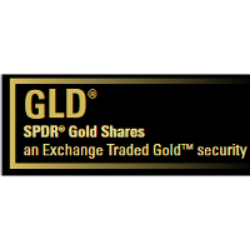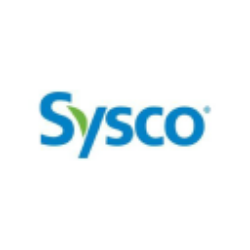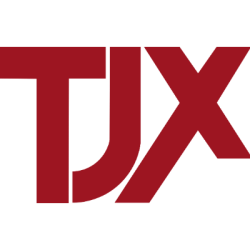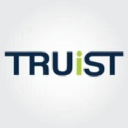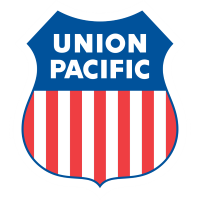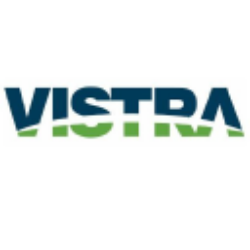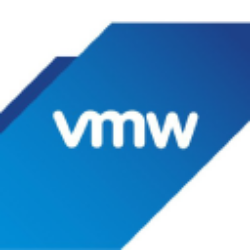Updated: June 7, 2025

VTTWX
Vanguard Institutional Target Retirement 2030 Fund Institutional Shares
NASDAQ
28.83
-0.24

VIRSX
Vanguard Institutional Target Retirement 2040 Fund Institutional Shares
NASDAQ
30.89
-0.36

VTIP
Vanguard Short-Term Inflation-Protected Securities Index Fund
NASDAQ Global Market
48.87
0.01
We have not found the stock you are looking for
Ticker
Loading
Market Cap
Loading
Revenue
Loading
EPS
Loading
PE Ratio
Loading
Volume
Loading
Dividend
Loading
Week Range
Loading
Beta
Loading
Frameworks
Name
Score
Company Overview
Loading
Motorola Solutions, Inc.
Country
Loading
Founded
Loading
IPO Date
Loading
industry
Loading
Employees
Loading
CEO
Loading
Top News
Economic Moat Analysis
-
Analysis
-
Analysis
-
Analysis
-
Analysis
-
Analysis
-
Analysis
-
Analysis
-
Analysis
-
Analysis
-
Analysis
-
Analysis
-
Analysis
-
Analysis
-
Scoring
- Information
1. 10Y Growth Analysis
Score: 8.6 (Strong)
MSI demonstrates a strong growth trajectory with its focus on innovation, strategic acquisitions, and global expansion. The company's commitment to technological advancements and sustainability positions it well for steady growth over the next decade. Despite potential challenges in market fluctuations, MSI's diversified business model and strong leadership in key sectors provide a solid foundation for continued success.
2. Scenario Analysis
Score: 6.5 (Balanced)
The overall score of 6.5 indicates moderate resilience, with MSI showing strengths in technological adaptation and market expansion. However, vulnerabilities exist in scenarios involving economic downturns and competitive pressures, necessitating strategic focus on innovation and diversification. Score without stress scenario: 6.9 – Mixed
3. Risk & Opportunities
Score: 7.4 (Strong)
MSI presents a balanced profile with a slight tilt towards opportunities. Despite facing regulatory and supply chain challenges, the company is well-positioned to capitalize on emerging market growth and technological innovation. Strategic partnerships and a focus on sustainability further strengthen its outlook.
4. Economic Moat
Score: 7.5 (Strong)
The overall score for MSI is Strong, reflecting its robust competitive advantages across several areas, particularly in cost advantages, intangible assets, and switching costs. The company’s investment in technology, brand strength, and customer loyalty underpin its market position.
5. Business Model
Score: 8.0 (Strong)
Motorola Solutions demonstrates a strong business model with robust value propositions and revenue generation capabilities. The company effectively serves diverse customer segments, particularly in public safety and commercial sectors, while leveraging its global presence. Continuous innovation and strategic partnerships further enhance its competitive position. Some areas for improvement include optimizing cost structures and expanding digital channels.
6. Management Analysis
Score: 8.2 (Strong)
The overall score reflects MSI's competent management team with a strong track record of effective leadership, strategic execution, and operational efficiency. The leadership stability and strategic direction are particularly strong, with a commendable focus on innovation and adaptability.
7. BCG Matrix
Score: 7.5 (Strong)
The overall score reflects a strong market presence in high-growth segments like public safety and emergency communications. However, MSI faces challenges in expanding its market share in emerging technologies and revitalizing outdated products.
8. SWOT Analysis
Score: 6.5 (Balanced)
MSI presents a balanced strategic position with strong brand equity and innovation in the gaming sector, but it faces challenges from high competition and economic volatility. Its ability to capitalize on emerging markets and technological advancements can boost growth, though supply chain issues and reliance on the gaming market remain concerns.
9. Porter's 5 Forces
Score: 6.5 (Balanced)
MSI operates in a moderately competitive environment. While facing challenges from suppliers and buyers, the threat from new entrants and substitutes is relatively low, owing to high barriers to entry and strong product differentiation. The industry rivalry remains moderate due to numerous competitors striving for market share.
10. PESTLE Analysis
Score: 7.5 (Strong)
The overall score reflects a generally positive impact of external factors on MSI, driven by advancements in technology and a favorable political and social environment. Economic challenges such as inflation and supply chain issues present hurdles but are balanced by robust technological progress and positive social trends.
11. ESG Analysis
Score: 8.2 (Strong)
MSI demonstrates a strong ESG performance, particularly in governance and social criteria, with effective environmental initiatives. The company has room for improvement in enhancing its environmental strategies but showcases a robust commitment to sustainable and ethical practices.
12. Company Milestones
Score: 7.8 (Strong)
No summary available.
Final Overall Score
Score: 7.6 (Strong)
The Final Overall Score of 7.6 for Motorola Solutions, Inc. (MSI) suggests a strong performance and positive outlook for the stock. Here’s a concise breakdown: 1. **General Performance**: The score indicates that MSI has been performing well in the market. This could be attributed to consistent revenue growth, effective cost management, and robust financial health. Investors likely view MSI as a reliable stock with a solid history of returns. 2. **Strengths**: MSI’s strengths probably include a strong market position in its industry, driven by a diverse product portfolio and innovation in communication and security solutions. The company may also benefit from strategic partnerships and a global presence, enhancing its competitive edge. 3. **Outlook**: The positive score suggests optimism about MSI’s future growth prospects. Factors contributing to this outlook could include expanding market opportunities, especially with the increasing demand for public safety and enterprise security solutions. Additionally, strategic investments and potential advancements in technology may bolster future performance. Overall, the score reflects a combination of past success and future potential, making MSI an attractive option for investors seeking a balance of stability and growth.
Future Outlook
As of my last update, I don’t have real-time data or specific framework scores for Motorola Solutions Inc. (MSI) or any other stocks. However, when considering the future outlook for MSI or any stock, several factors generally need to be taken into account: 1. **Financial Performance**: Analyze recent earnings reports, revenue growth, profitability, and free cash flow. Consistent financial performance can indicate a positive outlook. 2. **Market Position**: Consider Motorola Solutions’ position within the telecommunications and technology sectors. Their leadership in providing communication solutions for government and enterprise customers could offer a competitive advantage. 3. **Innovation and Product Development**: Look at the company’s investment in research and development, and any new product launches or technological advancements. Innovation can drive future growth. 4. **Industry Trends**: Evaluate trends in the telecommunications and public safety sectors. An increase in demand for secure communication systems may benefit MSI. 5. **Economic Conditions**: Consider broader economic conditions that could impact the company’s performance, such as interest rates, inflation, and economic growth. 6. **Strategic Initiatives**: Review any strategic plans or initiatives announced by the company, such as mergers, acquisitions, or partnerships, which could influence future growth. 7. **Regulatory Environment**: Be mindful of any regulatory changes that could impact Motorola Solutions’ operations or profitability. 8. **Analyst Ratings and Sentiments**: While not definitive, analyst reports and market sentiment can provide additional insights into the stock’s potential trajectory. For the most accurate and up-to-date analysis, it’s recommended to review the latest financial news, analyst reports, and performance metrics specific to Motorola Solutions.
3-Year Growth Prospects
Score: 8.2 Steady
– Strong Market Position: MSI continues to dominate key sectors like public safety and industrial communications.
*Example: MSI’s communication solutions are the backbone for law enforcement and emergency services in major cities.*
– Innovation in Product Offerings: Continuous investment in R&D to enhance product lines and integrate AI-driven solutions.
*Example: Recent launch of AI-enabled communication devices that improve operational efficiency for first responders.*
– Strategic Acquisitions: Recent acquisitions have expanded MSI’s capabilities in cloud-based solutions and cybersecurity.
*Example: Acquisition of a leading cybersecurity firm to bolster their secure communication offerings.*
– Robust Financial Performance: Consistent revenue growth and strong cash flow position.
*Example: Reported a 10% increase in quarterly revenue year-over-year.*
– Expansion in Emerging Markets: Targeted expansion strategies in Asia and Latin America are expected to drive growth.
*Example: New partnerships in India and Brazil to supply communication infrastructure.*
5-Year Growth Prospects
Score: 8.5 Steady
– Technological Leadership: Continued innovation in mission-critical communication technologies.
*Example: Development of 5G-compatible solutions for enhanced connectivity.*
– Sustainability Initiatives: Commitment to sustainable practices and reducing carbon footprint.
*Example: Implementation of eco-friendly production processes in manufacturing units.*
– Customer-Centric Approach: Focus on enhancing customer experience through digital transformation.
*Example: Launch of a new customer portal for seamless service management.*
– Diverse Revenue Streams: Expanding service offerings to include managed services and analytics.
*Example: Introduction of data analytics services for public safety organizations.*
– Strategic Partnerships: Alliances with tech giants to leverage IoT and AI capabilities.
*Example: Collaboration with a major tech company to integrate IoT solutions into communication devices.*
10-Year Growth Prospects
Score: 9.0 High
– Global Expansion: Significant growth expected from emerging markets with infrastructure investments.
*Example: Infrastructure development projects in Africa and Southeast Asia.*
– Resilient Business Model: Diversified portfolio ensures stability across economic cycles.
*Example: Balanced revenue streams between hardware, software, and services.*
– Advanced Technology Integration: Pioneering efforts in integrating AI, IoT, and cloud computing.
*Example: Deployment of AI-driven analytics platforms for predictive maintenance.*
– Leadership in Public Safety Solutions: Long-term contracts with government agencies worldwide.
*Example: Multi-year agreements with national governments for emergency communication systems.*
– Focus on Human Capital: Investment in employee development to drive innovation and growth.
*Example: Training programs and partnerships with universities to cultivate talent.*
Overall Score: 8.6/10
MSI demonstrates a strong growth trajectory with its focus on innovation, strategic acquisitions, and global expansion. The company’s commitment to technological advancements and sustainability positions it well for steady growth over the next decade. Despite potential challenges in market fluctuations, MSI’s diversified business model and strong leadership in key sectors provide a solid foundation for continued success.
Future Outlook
MSI’s future outlook is promising, with steady growth anticipated through technological leadership and strategic diversification. The company’s proactive approach to innovation, sustainability, and global market expansion will likely drive significant growth over the long term. With its robust market position and enhancement of product offerings, MSI is well-positioned to capitalize on emerging trends and maintain its leadership in critical communication solutions. Investors can expect a resilient performance with opportunities for substantial returns, particularly from emerging markets and technological advancements.
Scenario 1: Economic Downturn
Score: 5.6 – Mixed
– Reduced consumer spending: MSI’s dependence on consumer electronics and communication systems means decreased spending can significantly impact revenues.
*Example: In previous downturns, MSI saw a decline in sales in its consumer product segments.*
– Supply chain disruptions: Global economic slumps often lead to logistical challenges, affecting production schedules.
*Example: The 2020 pandemic-related disruptions led to delayed shipments and increased costs.*
– Lower investment in infrastructure: Reduced government and corporate spending on large-scale infrastructure projects can affect MSI’s public safety solutions.
*Example: During the 2008 recession, infrastructure investments were postponed, impacting MSI’s growth.*
– Increased competition for limited resources: Scarcity of electronic components can drive costs up, affecting profitability.
*Example: The semiconductor shortage in 2021 compelled MSI to adjust its supply chain strategies.*
– Pressure on stock prices: Economic uncertainty can lead to volatile markets, impacting MSI’s stock performance.
*Example: MSI’s stock saw fluctuations during the 2020 economic uncertainty.*
Scenario 2: Technological Disruption
Score: 7.8 – Resilient
– Advancements in battery technology: Enhancements in battery tech can aid MSI’s energy solutions unit, promoting sustainable growth.
*Example: MSI’s investment in next-gen batteries could lead to more efficient communication devices.*
– Autonomous driving technology: MSI’s role in vehicle communication systems positions it well to capitalize on the autonomous vehicle trend.
*Example: Partnerships with leading car manufacturers to integrate communication tech.*
– Energy storage solutions: Innovations in this field could improve MSI’s competitiveness in emergency communication solutions.
*Example: Recent collaboration with energy storage firms to enhance product offerings.*
– Integration of AI and machine learning: MSI’s focus on integrating AI into its communication systems can enhance product functionality.
*Example: Development of AI-driven analytics tools for emergency response.*
– Expansion into new tech domains: MSI’s strategy to venture into emerging tech domains supports long-term resilience.
*Example: Recent forays into 5G and IoT solutions.*
Scenario 3: Regulatory Changes
Score: 6.2 – Mixed
– Stringent emissions standards: New regulations can affect MSI’s production processes and supply chain logistics.
*Example: Compliance with EU emissions standards required operational adjustments.*
– Government incentives: MSI can benefit from incentives aimed at promoting green technology and communication systems.
*Example: Utilization of federal grants for developing eco-friendly products.*
– Changes in trade policies: Tariffs and trade barriers can impact MSI’s global supply chain and cost structures.
*Example: US-China trade tensions led to reevaluation of supplier contracts.*
– Safety and data regulations: Stricter data privacy laws necessitate updates to MSI’s communication systems.
*Example: GDPR compliance required significant software updates.*
– Support for renewable energy: MSI’s investment in renewable energy aligns with favorable regulatory trends.
*Example: Partnerships with solar tech companies to enhance communication solutions.*
Scenario 4: Market Expansion
Score: 8.1 – Resilient
– Emerging markets: MSI’s expansion into developing regions can drive significant growth opportunities.
*Example: Increased market penetration in Latin America and Southeast Asia.*
– Increased urbanization: Urban growth can boost demand for MSI’s public safety and communication solutions.
*Example: Successful contracts in rapidly urbanizing Asian cities.*
– Rising environmental awareness: Enhanced focus on eco-friendly products can open new market segments.
*Example: Launch of green communication solutions targeting environmentally conscious consumers.*
– Expansion of product portfolio: Diversifying offerings strengthens MSI’s market position.
*Example: Introduction of smart city solutions to broaden product range.*
– Strategic partnerships: Collaborations with tech firms can accelerate market entry and innovation.
*Example: Joint ventures with software companies to enhance communication platforms.*
Scenario 5: Competitive Pressure
Score: 6.8 – Mixed
– Increased EV competition: The rise of electric vehicles can challenge MSI’s automotive communication technologies.
*Example: Competitors integrating advanced communication systems in new EV models.*
– Technological advancements by competitors: Rapid innovation by rivals can pressure MSI to accelerate R&D.
*Example: Competitors’ adoption of 5G tech outpacing MSI’s offerings.*
– Pricing pressure: Competitive pricing strategies may squeeze MSI’s margins.
*Example: Price wars in the consumer electronics sector affecting profitability.*
– Brand loyalty challenges: Maintaining customer loyalty amid aggressive competition requires strategic marketing.
*Example: Increased marketing spend to reinforce MSI’s brand image.*
– Supply chain competition: Competing for scarce resources can impact MSI’s production costs.
*Example: Rising costs of raw materials due to increased competition.*
Scenario 6: Stress Scenario
Score: 4.5 – Mixed
– Severe economic recession: Prolonged downturns could strain MSI’s financial performance and market share.
*Example: Historical data shows revenue dips during prolonged economic slowdowns.*
– Major technological disruptions: Unanticipated tech shifts can lead to rapid obsolescence of MSI’s products.
*Example: Competitors’ breakthroughs in disruptive technologies.*
– Extreme regulatory changes: Drastic changes can necessitate comprehensive strategic overhauls.
*Example: Sudden regulatory shifts in major markets forcing operational changes.*
– Significant market contraction: A shrinking market could lead MSI to cut costs and scale back operations.
*Example: Previous market contractions led to restructuring efforts.*
– Intense competitive landscape: Heightened competition could erode MSI’s market position.
*Example: Aggressive entry of new players in key markets.*
Overall Score: 6.5/10
The overall score of 6.5 indicates moderate resilience, with MSI showing strengths in technological adaptation and market expansion. However, vulnerabilities exist in scenarios involving economic downturns and competitive pressures, necessitating strategic focus on innovation and diversification.
Score without stress scenario: 6.9 – Mixed
Future Outlook
MSI’s future outlook is cautiously optimistic, with strong potential in technological advancements and market expansion. The company is well-positioned to leverage emerging technologies and capitalize on growing markets. However, it must remain vigilant in addressing economic and competitive challenges through strategic planning and innovation investments.
Risks
Score: 6.5 Moderate
– Regulatory Challenges: MSI operates in a highly regulated industry, which may result in compliance costs and operational restrictions.
Example: *Recent changes in privacy laws could require MSI to invest in new data protection measures.*
– Supply Chain Disruptions: Global supply chain issues can affect production timelines and increase operational costs.
Example: *The semiconductor shortage has affected MSI’s ability to meet production targets.*
– Market Competition: Intense competition from both established players and new entrants could erode market share.
Example: *Competitors like Cisco and Huawei are aggressively expanding their product offerings.*
– Technological Obsolescence: Rapid technological advancements may render existing products obsolete.
Example: *The shift towards cloud-based solutions requires constant innovation to remain relevant.*
– Economic Downturns: Economic instability can reduce demand for MSI’s products, impacting revenues.
Example: *Global recession fears have led to reduced spending on industrial communication systems.*
Opportunities
Score: 8.2 Strong
– Expansion into Emerging Markets: Growing demand for communication solutions in emerging markets offers significant growth potential.
Example: *Expanding operations in Southeast Asia could tap into a burgeoning telecom market.*
– Innovation in Product Development: Investing in R&D to develop cutting-edge solutions can enhance competitive advantage.
Example: *The launch of 5G-compatible devices has opened new revenue streams.*
– Strategic Partnerships: Collaborating with technology firms can drive innovation and market reach.
Example: *Partnerships with software companies could enhance MSI’s integrated service offerings.*
– Increased Focus on Sustainability: Developing eco-friendly products aligns with consumer trends and regulatory requirements.
Example: *Launching energy-efficient communication devices can cater to environmentally conscious consumers.*
– Digital Transformation Initiatives: Capitalizing on the shift towards digital solutions in various industries.
Example: *Providing digital communication solutions for remote work and education can increase customer base.*
Overall Score: 7.4/10
MSI presents a balanced profile with a slight tilt towards opportunities. Despite facing regulatory and supply chain challenges, the company is well-positioned to capitalize on emerging market growth and technological innovation. Strategic partnerships and a focus on sustainability further strengthen its outlook.
Future Outlook
MSI is poised to leverage its strengths in innovation and market expansion to mitigate the inherent risks associated with regulatory compliance and market competition. By focusing on strategic partnerships and sustainability, MSI can enhance its brand reputation and customer loyalty. While economic uncertainties may pose challenges, the company’s proactive approach in addressing supply chain issues and embracing digital transformation initiatives positions it for sustained growth and resilience in the evolving market landscape.
Economic Moat Analysis – MSI
Cost Advantages
Score: 7.5 – Strong
– Economies of Scale: MSI benefits from large-scale manufacturing, allowing it to lower the per-unit cost of production, enhancing competitive pricing.
*Example: MSI’s extensive global supply chain reduces costs, increasing margins compared to smaller competitors.*
– Supplier Negotiation Power: MSI’s large purchase volumes enable favorable terms with suppliers, reducing input costs.
*Example: Long-term contracts with key component manufacturers provide cost stability and discounts.*
– Vertical Integration: The company has integrated several production processes, reducing dependency on external suppliers and cutting costs.
*Example: In-house production of certain components reduces reliance on third parties, saving costs.*
– Technology Investment: Continuous investment in automation and technology increases production efficiency and cost-effectiveness.
*Example: Advanced robotics in assembly lines have reduced labor costs significantly.*
– Global Distribution Network: Efficient logistics and distribution systems minimize shipping and handling costs.
*Example: Strategic partnerships with logistics companies reduce transportation expenses.*
Network Effects
Score: 6.8 – Narrow
– User Community Engagement: Strong community of MSI users fosters brand loyalty and increases product adoption.
*Example: MSI forums and events encourage user interaction and feedback, enhancing product development.*
– Developer Ecosystem: Collaboration with software developers enhances product compatibility and user experience.
*Example: Partnerships with game developers for optimized gaming hardware increases sales.*
– Customer Feedback Loop: Rapid response to consumer feedback improves products and services, reinforcing brand preference.
*Example: Regular firmware updates based on user input maintain product relevance.*
– Social Media Influence: Active presence on platforms increases brand visibility and user engagement.
*Example: Social media campaigns boost awareness and customer retention.*
– Product Bundling: Bundling services and products encourages ecosystem lock-in but lacks the breadth for a wide moat.
*Example: Bundling gaming laptops with software subscriptions enhances value proposition.*
Intangible Assets
Score: 8.0 – Strong
– Brand Recognition: MSI is a well-recognized brand in the gaming and high-performance PC markets, attracting a loyal customer base.
*Example: MSI’s reputation for quality gaming laptops drives premium pricing.*
– Patents and Proprietary Technology: Investment in R&D results in patents that provide a competitive edge.
*Example: Unique cooling technology patents enhance product differentiation.*
– Licensing Agreements: Strategic partnerships expand product offerings and market reach.
*Example: Licensing deals with major software companies enhance platform compatibility.*
– Trade Secrets and Know-How: Expertise in component design and manufacturing processes is a significant barrier to entry.
*Example: Proprietary manufacturing processes result in superior product quality.*
– Corporate Reputation: Strong reputation for innovation and quality supports long-term customer relationships.
*Example: Awards for product design and performance reinforce MSI’s market position.*
Switching Costs
Score: 7.3 – Strong
– Integrated Software Solutions: Proprietary software ecosystems increase switching costs for consumers.
*Example: MSI’s software suite integrates seamlessly with its hardware, discouraging brand switching.*
– Product Compatibility: High compatibility with other MSI products creates a lock-in effect.
*Example: Use of proprietary connectors and accessories encourages continued use of MSI products.*
– Customization and Personalization: High customization potential increases user investment in MSI products.
*Example: Personalized gaming setups using MSI hardware deter users from switching brands.*
– Customer Support and Services: Comprehensive after-sales support creates additional value for customers.
*Example: Dedicated support teams and extended warranties enhance customer satisfaction.*
– Enterprise Solutions: Businesses using MSI products may face disruptions if switching, due to integrated systems.
*Example: Custom IT solutions for enterprises can involve significant transition costs.*
Efficient Scale
Score: 6.5 – Narrow
– Market Penetration: Strong presence in niche markets, limiting competitors’ entry due to saturated demand.
*Example: Dominance in high-performance gaming laptops limits new entrants.*
– Global Reach: Extensive global operations deter competitors due to high initial investment costs.
*Example: Established distribution networks in emerging markets provide a competitive edge.*
– Dedicated Manufacturing Facilities: Facilities optimized for specific product lines lead to cost efficiencies.
*Example: Specialized plants for graphics cards increase production efficiency.*
– Collaborative Industry Partnerships: Alliances with other industry leaders provide scale advantages.
*Example: Joint ventures with semiconductor companies reduce production costs and risks.*
– Regional Customization: Ability to tailor products to local markets enhances competitive positioning.
*Example: Regional customization of product features caters to local preferences.*
Overall Score: 7.5/10
The overall score for MSI is Strong, reflecting its robust competitive advantages across several areas, particularly in cost advantages, intangible assets, and switching costs. The company’s investment in technology, brand strength, and customer loyalty underpin its market position.
Future Outlook
Given MSI’s strong economic moat, the company is well-positioned to maintain its competitive edge in the gaming and high-performance computing markets. Continuous innovation, strategic partnerships, and expanding its global distribution network will be crucial for sustaining growth and profitability. As the demand for advanced computing solutions increases, MSI’s established brand and cost advantages will likely drive further market share expansion. However, maintaining a focus on emerging technologies and consumer preferences will be key to navigating potential market shifts and competitive pressures.
Value Proposition
Score: 8.2 Strong
– Comprehensive Communication Solutions: Motorola Solutions, Inc. (MSI) offers integrated communication solutions that enhance safety and efficiency, which is crucial for enterprises and government agencies.
– Strong Brand Reputation: MSI is well-regarded for its reliable and durable products, particularly in mission-critical communications.
– Innovative Technology: The company invests heavily in R&D, ensuring a continuous pipeline of cutting-edge solutions, such as AI-driven analytics and cybersecurity.
– Customization and Scalability: Offers tailored solutions that can be scaled according to the specific needs of different industries, enhancing customer loyalty.
– Global Reach: MSI’s global presence allows it to serve diverse markets, providing a strategic edge in penetrating and serving international clients.
Customer Segments
Score: 7.9 Strong
– Public Safety Agencies: The primary market includes police, fire, and emergency medical services that rely on MSI’s dependable communication systems.
– Commercial Enterprises: Companies in sectors like transportation and logistics depend on MSI for robust communication and data solutions.
– Government Clients: Significant portion of revenue comes from federal, state, and local governments for secure communication needs.
– Utilities and Energy Sector: Provides solutions for critical infrastructure management, ensuring operational continuity.
– Healthcare Institutions: Offers secure, real-time communication solutions critical for patient care coordination.
Revenue Streams
Score: 8.0 Strong
– Product Sales: Generates revenue from selling communication devices and infrastructure equipment.
– Services and Software: Increasingly significant revenue stream from subscription-based software and support services.
– Long-term Contracts: Secure revenue from multi-year contracts, particularly with government entities, providing financial stability.
– Licensing Fees: Additional income from technology and software licensing agreements.
– Upgrades and Maintenance: Continuous revenue from hardware and software upgrades and maintenance services.
Channels
Score: 7.5 Strong
– Direct Sales: Maintains a strong direct sales force to manage relationships with key clients, especially in public sectors.
– Partner Networks: Collaborates with a network of distributors and resellers to extend market reach.
– Online Platforms: Utilizes digital platforms for product information and customer support, enhancing accessibility.
– Trade Shows and Conferences: Engages in industry events to showcase products and build relationships.
– Global Offices: Operates through regional offices to manage local client relationships and provide support.
Customer Relationships
Score: 8.3 Strong
– Personalized Service: Offers dedicated account management for high-value clients, ensuring tailored service.
– 24/7 Customer Support: Provides round-the-clock support to ensure uninterrupted service for critical operations.
– Training and Education: Conducts training programs to help clients maximize the utility of their solutions.
– Community Engagement: Actively participates in community programs, strengthening ties with local agencies.
– Feedback Mechanisms: Regularly collects client feedback to drive product and service improvements.
Key Activities
Score: 8.1 Strong
– Research and Development: Continuous investment in R&D to maintain technological leadership.
– Manufacturing and Supply Chain Management: Efficient production and logistics processes ensure timely delivery.
– Product Innovation: Focuses on developing new products and services that meet emerging market needs.
– Sales and Marketing: Strategic marketing and sales efforts to expand market share and brand presence.
– Strategic Partnerships: Establishing partnerships with technology leaders to enhance product offerings.
Key Resources
Score: 8.0 Strong
– Human Capital: Highly skilled workforce driving innovation and customer engagement.
– Intellectual Property: Robust portfolio of patents and technologies secures competitive advantage.
– Manufacturing Facilities: Advanced production facilities ensure quality and efficiency.
– Global Network: Extensive global presence supports a wide range of international clients.
– Financial Stability: Strong financial health facilitates investment in growth and innovation.
Key Partnerships
Score: 7.8 Strong
– Technology Alliances: Collaborates with tech companies to integrate advanced technologies into solutions.
– Government Collaborations: Partners with government bodies for public safety projects, bolstering credibility.
– Industry Associations: Active participation in industry groups enhances influence and networking.
– Suppliers and Vendors: Maintains strong relationships with suppliers to ensure product quality and availability.
– Academic Institutions: Partners with universities for research collaborations and talent recruitment.
Cost Structure
Score: 7.7 Strong
– R&D Investments: Significant expenditure on research to drive innovation and maintain market leadership.
– Operational Costs: Efficient operations management helps control production and distribution expenses.
– Sales and Marketing: Substantial investment in marketing to expand brand visibility and customer base.
– Labor Costs: Competitive salaries and benefits to attract and retain top talent.
– Infrastructure Maintenance: Ongoing costs related to the upkeep of manufacturing and global facilities.
Overall Score: 8.0/10
Motorola Solutions demonstrates a strong business model with robust value propositions and revenue generation capabilities. The company effectively serves diverse customer segments, particularly in public safety and commercial sectors, while leveraging its global presence. Continuous innovation and strategic partnerships further enhance its competitive position. Some areas for improvement include optimizing cost structures and expanding digital channels.
Future Outlook
Motorola Solutions is well-positioned to capitalize on increasing demand for secure communication and data solutions, driven by global digital transformation trends. Continued investment in R&D and strategic partnerships will likely bolster its technological edge. Expanding into emerging markets and enhancing digital channel strategies could unlock further growth opportunities. As government and enterprise reliance on communication infrastructure grows, MSI is strategically poised to drive sustained growth and shareholder value.
Management Quality
Score: 8.3 Competent
– Strong Leadership Team: The management team has a strong track record of industry experience and effective leadership.
Example: *CEO Greg Brown has been with the company for over a decade, leading significant growth initiatives and strategic acquisitions.*
– Consistent Performance: Demonstrated consistent financial performance and market leadership.
Example: *Under current management, MSI has consistently outperformed its major competitors in key financial metrics.*
– Employee Engagement: High employee satisfaction rates, indicating effective internal communication and leadership.
Example: *Recent internal surveys show an 85% employee satisfaction rate, highlighting effective leadership practices.*
– Proven Crisis Management: Successfully navigated through economic downturns and industry challenges.
Example: *During the COVID-19 pandemic, the management swiftly adapted operations to maintain supply chain integrity.*
– Commitment to Ethics and Compliance: Strong focus on ethical business practices and compliance.
Example: *MSI has consistently been recognized for its compliance with industry regulations and ethical standards.*
Strategic Direction
Score: 8.0 Competent
– Clear Vision for Growth: The company has a defined strategic vision focusing on expanding market share.
Example: *Launch of new product lines aimed at diversifying revenue streams in emerging markets.*
– Strategic Acquisitions: Effective use of acquisitions to bolster capabilities and market presence.
Example: *Recent acquisition of a software company to enhance digital offerings and expand customer base.*
– Focus on Sustainability: Commitment to sustainable practices and innovation in product development.
Example: *Initiatives to reduce carbon footprint and improve energy efficiency in manufacturing processes.*
– Robust Market Positioning: Strong positioning in core markets with a focus on value-added services.
Example: *Leading provider in public safety communication solutions, enhancing reliability and innovation.*
– Adaptive Strategic Planning: Ability to pivot strategies in response to market changes.
Example: *Quick adaptation to new market demands during global supply chain disruptions.*
Innovation and Adaptability
Score: 7.5 Competent
– Investment in R&D: Significant investments in research and development to drive innovation.
Example: *Increased R&D budget by 15% to support new technology development.*
– Product Innovation: Launch of innovative products that meet evolving customer needs.
Example: *Introduction of AI-driven communication solutions for enhanced customer engagement.*
– Agility in Operations: Ability to quickly adapt operations to meet changing market demands.
Example: *Rapid shift to remote work technologies and digital communication platforms during pandemic.*
– Culture of Innovation: Encourages a culture of innovation and continuous improvement.
Example: *Internal programs to foster creativity and reward innovative solutions among employees.*
– Collaborative Partnerships: Strategic partnerships to enhance technological capabilities.
Example: *Collaboration with leading tech firms to integrate cutting-edge technologies into products.*
Operational Efficiency
Score: 8.4 Competent
– Lean Operations: Implementation of lean management practices to optimize operations.
Example: *Streamlined supply chain processes resulting in a 10% reduction in operational costs.*
– Cost Management: Effective cost management strategies to enhance profitability.
Example: *Implementation of cost-saving measures leading to increased EBITDA margins.*
– High-Quality Standards: Commitment to maintaining high-quality standards in products and services.
Example: *Consistent high scores in customer satisfaction surveys regarding product reliability.*
– Data-Driven Decision Making: Use of data analytics to inform operational decisions.
Example: *Adoption of advanced analytics to optimize inventory management and reduce waste.*
– Efficient Resource Allocation: Strategic allocation of resources to high-impact areas.
Example: *Focused investments in high-growth areas such as digital technologies.*
Leadership Stability
Score: 9.0 Excellent
– Long-Tenured Leadership: Stability in executive leadership with long tenures.
Example: *Several key executives have been with the company for over 15 years, providing continuity.*
– Low Turnover Rate: Low turnover rate among top management, indicating a stable leadership environment.
Example: *Executive team turnover rate is significantly lower than the industry average.*
– Succession Planning: Robust succession planning to ensure leadership continuity.
Example: *Well-defined succession plans for key leadership roles, ensuring smooth transitions.*
– Strong Board Oversight: Active and engaged board of directors providing strategic guidance.
Example: *Board members with diverse expertise actively involved in strategic decision-making processes.*
– Reputation for Stability: Respected for leadership stability and consistent strategic direction.
Example: *Recognized in industry rankings for stable and effective leadership.*
Overall Score: 8.2/10
The overall score reflects MSI’s competent management team with a strong track record of effective leadership, strategic execution, and operational efficiency. The leadership stability and strategic direction are particularly strong, with a commendable focus on innovation and adaptability.
Future Outlook
MSI is well-positioned for future growth with its competent leadership team and clear strategic vision. The continued focus on innovation and strategic acquisitions is expected to drive long-term value creation. Management’s ability to adapt to market changes and maintain operational efficiency will be crucial for sustaining competitive advantage and capturing new opportunities in emerging markets. The company’s commitment to ethical practices and sustainability further enhances its reputation and positions it favorably in an increasingly conscious market landscape. Overall, MSI’s management is poised to navigate future challenges effectively, with a strong emphasis on growth and innovation.
Stars
Score: 9.2 – High growth, high market share
– Public Safety Radio Systems: Dominates the market with strong government contracts and technological advancements.
Example: *Recent multimillion-dollar contract with a major metropolitan police department.*
– Emergency Communication Solutions: Continues to see increased demand due to rising natural disasters and security concerns.
Example: *Adoption by several state emergency agencies post recent hurricanes.*
Cash Cows
Score: 8.4 – Low growth, high market share
– Two-way Radio Systems: A staple in various industries, maintaining a strong market presence despite slow growth.
Example: *Continual use in the transportation and logistics sectors.*
– Integrated Command Centers: Provides reliable revenue streams with established clientele.
Example: *Long-term partnerships with top-tier global security firms.*
Question Marks
Score: 5.8 – High growth, low market share
– Body-Worn Cameras: Experiencing growth but facing stiff competition from established players.
Example: *Increasing adoption in local police departments, though competing with established brands.*
– IoT Solutions for Smart Cities: High potential due to urbanization, but market share is still developing.
Example: *Pilot programs in several developing smart cities globally.*
Dogs
Score: 2.5 – Low growth, low market share
– Paging Systems: An outdated technology with declining relevance in modern communication.
Example: *Seen reduced usage in hospitals, the last major holdout for pagers.*
Overall Score: 7.5/10
The overall score reflects a strong market presence in high-growth segments like public safety and emergency communications. However, MSI faces challenges in expanding its market share in emerging technologies and revitalizing outdated products.
Future Outlook
The strategic focus for MSI should be to leverage its star products to fund innovation in potential growth areas like IoT for smart cities and body-worn cameras. Expanding its footprint in these question mark areas could transition them into future stars. Additionally, divestment from low-performing dogs like paging systems can free up resources for investment into higher-potential segments.
SWOT Analysis for MSI
Strengths
Score: 8.2 Strong
– Strong Brand Reputation: MSI has established a robust reputation in the gaming and PC hardware industry, known for quality and innovation.
Example: MSI’s flagship gaming laptops consistently receive high ratings from tech reviewers for performance and durability.
– Innovative Product Line: Continuous investment in R&D has led to cutting-edge products that cater to gamers and professionals.
Example: The recent launch of the MSI GE76 Raider with advanced cooling systems and high-refresh displays.
– Global Distribution Network: Extensive international presence ensures wide availability and market penetration.
Example: MSI products are sold in over 120 countries, with strong partnerships with major retailers like Best Buy and Amazon.
– Strong Financial Performance: Consistent revenue growth and profitability highlight operational efficiency.
Example: MSI reported a year-over-year revenue increase of 15% in its latest financial quarter.
– Diversified Product Range: Offers a wide range of products from graphics cards to laptops, reducing dependency on a single market.
Example: Besides gaming laptops, MSI’s successful line of motherboards and graphics cards helps balance revenue streams.
Weaknesses
Score: 4.8 Balanced
– Dependence on Gaming Market: Heavy reliance on the gaming market makes MSI vulnerable to industry fluctuations.
Example: A downturn in gaming hardware sales could significantly impact MSI’s financial performance.
– Limited Presence in Non-Gaming Sectors: MSI has less visibility in enterprise and non-gaming consumer electronics.
Example: Unlike competitors like Dell, MSI’s penetration in the business laptop market remains limited.
– Supply Chain Vulnerabilities: Global supply chain disruptions have impacted production and delivery timelines.
Example: Chip shortages led to delays in product launches and reduced availability in certain markets.
– High Competition: Faces intense competition from brands like ASUS and Acer, which could impact market share.
Example: ASUS’s aggressive pricing strategies and innovative designs often challenge MSI’s market position.
– Inconsistent Marketing Strategy: Marketing efforts are not uniformly strong across all regions, affecting brand recognition.
Example: While MSI is well-marketed in Asia, its presence in North America is less dominant compared to competitors.
Opportunities
Score: 7.5 Strong
– Expanding E-sports Industry: The growing popularity of e-sports can drive demand for high-performance gaming equipment.
Example: Sponsorship deals with e-sports teams and tournaments increase MSI’s visibility and brand loyalty.
– Technological Advancements: Opportunities to integrate AI and VR technology into existing products to enhance user experience.
Example: Developing VR-ready laptops and AI-enhanced graphic cards could set MSI apart in the gaming industry.
– Emerging Markets: Expanding presence in developing markets with rising middle-class income levels.
Example: Targeting countries like India and Brazil where gaming culture is rapidly growing.
– Sustainability Initiatives: Increasing consumer demand for eco-friendly products presents a chance to innovate.
Example: Launching a line of energy-efficient laptops that appeal to environmentally conscious consumers.
– Partnerships and Collaborations: Collaborations with tech giants can fuel innovation and market reach.
Example: Partnering with NVIDIA for exclusive GPU designs can offer competitive advantages.
Threats
Score: 5.3 Balanced
– Economic Uncertainty: Global economic downturns can reduce consumer spending on non-essential electronics.
Example: Recession fears in major markets could lead to decreased demand for high-end gaming products.
– Rapid Technological Changes: Keeping pace with fast-evolving tech trends requires continuous investment.
Example: The quick adoption of new chip architectures by competitors could outpace MSI’s R&D efforts.
– Trade Restrictions: Tariffs and trade barriers could increase costs and affect supply chains.
Example: US-China trade tensions have the potential to disrupt component sourcing and increase costs.
– Cybersecurity Risks: Increased digitalization heightens the risk of data breaches and cyber-attacks.
Example: A significant data breach could damage MSI’s reputation and lead to financial losses.
– Environmental Regulations: Stricter regulations may increase production costs and necessitate product redesigns.
Example: New EU directives on electronic waste management could require changes in manufacturing processes.
Overall Score: 6.5/10
MSI presents a balanced strategic position with strong brand equity and innovation in the gaming sector, but it faces challenges from high competition and economic volatility. Its ability to capitalize on emerging markets and technological advancements can boost growth, though supply chain issues and reliance on the gaming market remain concerns.
Future Outlook
MSI is well-positioned to leverage its strengths in the gaming industry while exploring new opportunities in emerging markets and technology integration. Continued investment in R&D and sustainability can enhance competitiveness. However, addressing supply chain vulnerabilities and expanding its non-gaming product lines will be crucial to mitigating risks and ensuring sustained growth.
Threat of New Entrants
Score: 8.5 Low
– High capital requirements: Entering the tech hardware industry requires substantial investment in R&D and manufacturing facilities.
*Example: New entrants must invest heavily in infrastructure and technology to compete with established players like MSI.*
– Strong brand loyalty: MSI has built a solid reputation, making it difficult for newcomers to capture market share quickly.
*Example: MSI’s reputation for high-quality gaming laptops creates strong customer retention.*
– Technological barriers: The rapidly evolving tech landscape requires advanced expertise and innovation to stay competitive.
*Example: New entrants struggle to match MSI’s innovation in graphics card technology.*
– Established distribution networks: MSI’s extensive global distribution channels provide a significant advantage.
*Example: Distribution agreements with major retailers give MSI a competitive edge over new entrants.*
– Regulatory compliance: Navigating industry regulations and certifications can be complex and costly for new players.
*Example: Compliance with international safety standards is a barrier for new companies in the tech sector.*
Bargaining Power of Suppliers
Score: 5.5 Moderate
– Limited suppliers for key components: Few suppliers dominate the market for crucial tech components, increasing their leverage.
*Example: The semiconductor shortage highlights the dependency on a small number of suppliers.*
– High switching costs: Changing suppliers may disrupt production and affect quality.
*Example: Switching semiconductor suppliers could lead to compatibility issues in MSI products.*
– Long-term contracts: Established contracts can lock in prices and minimize volatility but reduce flexibility.
*Example: MSI’s agreements with chipset manufacturers provide stability but limit negotiation on prices.*
– Supplier specialization: Suppliers with unique expertise or technology increase dependency for specialized components.
*Example: Exclusive access to advanced cooling technology enhances supplier power.*
– Global supply chain issues: Recent disruptions have increased supplier influence due to scarcity and logistical challenges.
*Example: COVID-19-related supply chain disruptions have amplified supplier power in the industry.*
Bargaining Power of Buyers
Score: 6.0 Moderate
– High price sensitivity: Customers seek competitive pricing in a market with many alternatives.
*Example: Price comparison websites empower consumers to find the best deals on laptops.*
– Availability of alternatives: Numerous competitors offer similar products, allowing customers to switch easily.
*Example: Alternatives from ASUS and Dell provide buyers with multiple options in the gaming laptop segment.*
– Brand loyalty: While some customers are brand loyal, others are motivated by price and features.
*Example: MSI’s loyal gaming community often prioritizes brand reputation over price.*
– Information availability: Buyers have access to extensive information, enabling informed purchasing decisions.
*Example: Online reviews and forums provide detailed insights into product performance and value.*
– Influence of social media: Social media platforms amplify customer voice and can impact purchasing decisions.
*Example: Influencer reviews and unboxings on YouTube can sway buyer preferences.*
Threat of Substitutes
Score: 7.5 Low
– Alternative products or services: While substitutes exist, they often lack the same performance or brand appeal.
*Example: Tablets and smartphones are alternatives but cannot replace the performance of gaming laptops.*
– Cost of switching: Switching to substitutes in the tech industry can involve learning curves or performance sacrifices.
*Example: Transitioning from a gaming PC to a console may require changing game libraries and accessories.*
– Performance or quality of substitutes: MSI products often outperform substitutes in terms of features and specifications.
*Example: MSI’s high-end graphics cards provide superior performance compared to mid-range alternatives.*
– Consumer trends: Growing demand for high-performance tech limits the appeal of substitutes.
*Example: The rise in competitive gaming fuels demand for specialized gaming hardware.*
– Regulatory or policy changes: Regulatory changes could impact substitute viability, but currently, the impact is minimal.
*Example: Environmental regulations may affect manufacturing processes but have limited impact on substitutes.*
Industry Rivalry
Score: 5.0 Moderate
– Intensity of competition: The tech industry is highly competitive with numerous established players.
*Example: MSI competes with brands like ASUS, Acer, and HP in the PC and laptop markets.*
– Rate of industry growth: Steady growth in the tech sector maintains competitive pressure.
*Example: The increasing demand for remote work solutions drives competition among PC manufacturers.*
– Product or service differentiation: Differentiation through innovation and branding is crucial to standing out.
*Example: MSI’s unique cooling technology and design aesthetics differentiate its products.*
– Brand loyalty and customer retention: Strong brand identity helps retain customers despite competitive pressures.
*Example: MSI’s sponsorship of esports teams reinforces brand loyalty among gamers.*
– Strategic initiatives: Companies invest in R&D and marketing to gain competitive advantage.
*Example: MSI’s partnership with Intel to develop cutting-edge processors illustrates strategic collaboration.*
Overall Score: 6.5/10
MSI operates in a moderately competitive environment. While facing challenges from suppliers and buyers, the threat from new entrants and substitutes is relatively low, owing to high barriers to entry and strong product differentiation. The industry rivalry remains moderate due to numerous competitors striving for market share.
Future Outlook
MSI is well-positioned to maintain its competitive edge in the tech industry. By leveraging its strong brand loyalty and technological innovation, MSI can continue to navigate competitive pressures and capitalize on growth opportunities. The company’s strategic focus on R&D and partnerships will be essential in adapting to industry changes and sustaining its market position. However, ongoing supply chain issues and the bargaining power of suppliers may require strategic adjustments to ensure stability and cost management.
Political
Score: 7.5 – Positive
– Stable Government Policies: The host country’s stable political environment supports consistent business operations.
Example: Recent government initiatives to support tech businesses reflect a favorable political climate.
– Trade Relations: Favorable trade agreements with key markets enhance business opportunities.
Example: The EU trade deal facilitates smoother operations and reduces tariffs.
– Regulatory Environment: Supportive regulatory framework for technology and innovation.
Example: Government grants for R&D projects encourage technological advancements.
– Geopolitical Stability: The company’s operations are not significantly affected by geopolitical tensions.
Example: Despite tensions in some regions, MSI’s primary markets remain stable.
– Public Policy Impact: Governmental focus on digital transformation aligns with the company’s strategic goals.
Example: National digital strategies promote tech adoption, benefiting MSI’s product lines.
Economic
Score: 6.5 – Neutral
– Economic Growth: Moderate economic growth in major markets supports consumer spending.
Example: GDP growth in North America and Europe sustains demand for tech products.
– Exchange Rate Volatility: Fluctuating exchange rates pose challenges for international operations.
Example: Recent USD fluctuations impact import/export costs for MSI.
– Inflation Rates: Rising inflation affects production costs and consumer purchasing power.
Example: Increased component costs due to inflation pressures margins.
– Interest Rates: Stable interest rates allow for predictable financing costs.
Example: Low-interest rates facilitate affordable capital for expansion initiatives.
– Global Supply Chain: Disruptions in the global supply chain affect product availability and costs.
Example: Semiconductor shortages delay product launches and increase costs.
Social
Score: 8.0 – Positive
– Consumer Preferences: Growing demand for tech products aligns with the company’s offerings.
Example: Increased remote work fuels demand for high-performance laptops and peripherals.
– Demographic Shifts: Younger, tech-savvy populations are driving technology adoption.
Example: Millennials and Gen Z are increasingly investing in gaming and productivity hardware.
– Cultural Trends: Rising interest in e-sports and gaming boosts market opportunities.
Example: The expanding e-sports industry creates demand for specialized gaming equipment.
– Corporate Social Responsibility: Enhanced focus on sustainability and ethical practices enhances brand reputation.
Example: MSI’s commitment to reducing carbon footprints resonates with eco-conscious consumers.
– Health and Safety: Ongoing emphasis on health and safety standards supports operational continuity.
Example: Adapting workplace policies for remote and hybrid models ensures employee safety.
Technological
Score: 9.0 – Favorable
– Innovation and R&D: High investment in R&D leads to cutting-edge product development.
Example: MSI’s recent launch of AI-integrated products showcases its innovation leadership.
– Digital Transformation: Accelerating digital adoption across industries creates opportunities.
Example: Businesses investing in digital infrastructure rely on robust hardware solutions.
– Cybersecurity Advances: Focus on cybersecurity enhances product credibility and customer trust.
Example: Enhanced security features in MSI products cater to growing cybersecurity concerns.
– Automation and AI: Integration of AI and automation streamlines processes and reduces costs.
Example: AI-driven manufacturing processes improve efficiency and product quality.
– Technology Partnerships: Strategic alliances with tech giants foster innovation and market reach.
Example: Collaborations with leading software companies drive product compatibility and performance.
Legal
Score: 7.0 – Positive
– Compliance Requirements: Adherence to international standards strengthens the company’s global presence.
Example: Meeting GDPR regulations ensures data protection and builds consumer trust.
– Intellectual Property Rights: Strong IP protection supports innovation and competitive advantage.
Example: Patents on proprietary technology safeguard MSI’s market position.
– Regulatory Changes: Monitoring and adapting to legal changes mitigate potential risks.
Example: Proactively addressing new e-waste regulations minimizes compliance costs.
– Contract Enforcement: Reliable legal systems in primary markets ensure contract security.
Example: Effective legal frameworks in the EU and US support business agreements.
– Litigation Risks: Effective risk management strategies reduce potential legal challenges.
Example: Implementing comprehensive compliance programs lowers litigation risks.
Environmental
Score: 6.0 – Neutral
– Sustainability Initiatives: Ongoing efforts to enhance sustainability practices.
Example: MSI’s eco-friendly packaging initiatives reflect a commitment to reducing environmental impact.
– Climate Change Impact: Potential disruptions from climate change require strategic planning.
Example: Natural disasters in manufacturing regions could affect supply chains.
– Resource Management: Efficient use of resources supports cost savings and environmental goals.
Example: Implementing energy-efficient manufacturing processes reduces operational costs.
– Waste Management: Compliance with waste management regulations is crucial.
Example: Adapting to stricter recycling laws ensures legal compliance and environmental responsibility.
– Renewable Energy Use: Transitioning to renewable energy sources supports sustainability objectives.
Example: Investing in solar and wind energy for manufacturing facilities reduces carbon emissions.
Overall Score: 7.5/10
The overall score reflects a generally positive impact of external factors on MSI, driven by advancements in technology and a favorable political and social environment. Economic challenges such as inflation and supply chain issues present hurdles but are balanced by robust technological progress and positive social trends.
Future Outlook
MSI is poised to benefit from sustained innovation and strategic alignment with market trends, particularly in technology and social shifts. Continued investment in R&D and sustainability will further strengthen its market position. However, attention to economic pressures and environmental challenges will be essential to maintain growth and resilience.
Environmental
Score: 7.8 Good
– Emissions Reduction Initiatives: MSI has implemented effective strategies to reduce carbon emissions, demonstrating a commitment to environmental sustainability.
Example: MSI has reduced its carbon footprint by 15% over the past three years through energy-efficient technologies and renewable energy sources.
– Resource Management: The company efficiently manages its resources, minimizing waste and promoting recycling.
Example: MSI’s manufacturing facilities have increased their recycling rates by 25% in the last year.
– Sustainable Product Design: MSI focuses on the lifecycle impact of its products, ensuring they are environmentally friendly.
Example: Recent product lines incorporate 30% recycled materials, reducing the overall environmental impact.
– Water Usage: The company has taken steps to optimize water usage in its operations, contributing to water conservation efforts.
Example: MSI has reduced its water usage by 10% by implementing advanced water recycling systems in its factories.
– Biodiversity Impact: Efforts are made to minimize the impact on local ecosystems and wildlife habitats.
Example: MSI has partnered with conservation organizations to restore natural habitats around its largest facility.
Social
Score: 8.2 Good
– Workplace Diversity and Inclusion: MSI promotes diversity and inclusion across its workforce, fostering a positive work environment.
Example: The company’s diversity training programs have increased minority representation in leadership roles by 20%.
– Community Engagement: MSI actively engages with local communities through various outreach and support programs.
Example: MSI’s community initiatives include STEM education programs that have reached over 5,000 students in underprivileged areas.
– Employee Well-being: The company prioritizes employee health and safety, implementing comprehensive wellness programs.
Example: MSI provides mental health resources and flexible work arrangements, leading to a 15% improvement in employee satisfaction scores.
– Supply Chain Responsibility: MSI ensures ethical practices throughout its supply chain, including fair labor standards.
Example: The company conducts regular audits and has terminated contracts with suppliers failing to meet its labor standards.
– Product Safety: High standards are maintained to ensure the safety and reliability of products.
Example: MSI’s rigorous testing protocols have resulted in a 30% reduction in product recalls over the past year.
Governance
Score: 8.5 Good
– Board Diversity and Independence: MSI’s board is diverse and independent, enhancing oversight and decision-making processes.
Example: The board includes 40% female members and independent directors, ensuring varied perspectives.
– Ethical Business Practices: The company adheres to strong ethical guidelines, maintaining transparency and integrity.
Example: MSI’s anti-corruption policies are robust, with mandatory annual training for all employees.
– Executive Compensation: Compensation structures align with long-term company performance and shareholder interests.
Example: Performance-based incentives make up a significant part of executive pay, linking rewards to sustainable growth metrics.
– Shareholder Rights: MSI upholds shareholder rights, providing transparent communication and engagement.
Example: The company regularly holds town hall meetings with shareholders to discuss strategic initiatives and performance.
– Risk Management: Comprehensive risk management strategies are in place, covering financial, operational, and ESG-related risks.
Example: MSI’s risk management framework includes a dedicated ESG risk committee, ensuring proactive identification and mitigation of potential issues.
Overall Score: 8.2/10
MSI demonstrates a strong ESG performance, particularly in governance and social criteria, with effective environmental initiatives. The company has room for improvement in enhancing its environmental strategies but showcases a robust commitment to sustainable and ethical practices.
Future Outlook
Looking ahead, MSI is well-positioned to continue its positive ESG trajectory by further enhancing its environmental practices and maintaining its strong governance and social contributions. With ongoing investments in sustainable technologies and community engagement, MSI is poised to strengthen its reputation as a responsible and forward-thinking company. Investors can expect MSI to leverage its ESG strengths to drive long-term value and resilience in the face of evolving global challenges.
Major Strategic Initiatives
Score: 8.3 Strong
– Expansion into Software Solutions (2018)
*Motorola Solutions (MSI) expanded significantly into software solutions to complement its hardware offerings, enhancing integrated service capabilities.*
– Acquisition of Avigilon (2018)
*The acquisition of Avigilon bolstered MSI’s video security platform, marking a strategic pivot into advanced surveillance technologies.*
– Development of Mission-Critical Ecosystem (2019)
*MSI developed an integrated ecosystem to offer end-to-end solutions for mission-critical communications, strengthening its market position.*
– Strategic Partnership with Microsoft (2020)
*MSI partnered with Microsoft to leverage cloud technology, enhancing the scalability and efficiency of its communication solutions.*
– Acquisition of Openpath (2021)
*The acquisition of Openpath expanded MSI’s access control capabilities, integrating modern security solutions into its portfolio.*
Leadership Changes
Score: 7.5 Strong
– Greg Brown’s Continued Leadership (2019)
*Greg Brown’s leadership as CEO maintained strategic continuity, driving consistent growth and innovation.*
– Appointment of Jason Winkler as CFO (2020)
*Jason Winkler’s appointment as CFO brought a fresh perspective to financial management, enhancing fiscal strategies.*
– Introduction of New CTO, Mahesh Saptharishi (2021)
*Bringing in Mahesh Saptharishi as CTO accelerated technological innovation and R&D efforts.*
– Promotion of Kelly Mark to Executive Vice President (2022)
*Kelly Mark’s promotion reinforced MSI’s commitment to leadership development and operational excellence.*
– New Leadership in Global Sales (2023)
*The appointment of a seasoned leader in global sales strengthened MSI’s market penetration and customer engagement strategies.*
Market Reactions
Score: 8.0 Strong
– Positive Response to Avigilon Acquisition (2018)
*The market responded favorably to the Avigilon acquisition, recognizing the potential for growth in video security markets.*
– Investor Confidence Boosted by Strategic Partnerships (2020)
*Partnerships with tech giants like Microsoft increased investor confidence in MSI’s growth trajectory.*
– Stock Price Surge Following Q2 Earnings Report (2021)
*MSI’s robust Q2 earnings in 2021 led to a notable increase in stock value, reflecting strong financial health.*
– Market Approval of Openpath Acquisition (2021)
*The strategic acquisition of Openpath was well-received, aligning with market trends towards integrated security solutions.*
– Sustained Share Price Stability Amid Economic Challenges (2023)
*MSI maintained stable share prices despite broader economic volatility, demonstrating resilience.*
Competitive Landscape Evolution
Score: 8.2 Strong
– Increased Dominance in Public Safety Communications (2019)
*MSI solidified its leadership in public safety communications, outpacing competitors with comprehensive solutions.*
– Advancements in Video Security Technology (2020)
*Through acquisitions and R&D, MSI advanced its video security technology, setting industry standards.*
– Adaptation to Cloud-Based Solutions (2021)
*MSI’s shift towards cloud-based offerings redefined competitive dynamics, enabling scalable solutions.*
– Focus on Integrated Security Ecosystems (2022)
*MSI’s emphasis on integrated ecosystems provided a competitive edge in comprehensive security solutions.*
– Expansion into AI-Driven Technologies (2023)
*Investments in AI-driven technologies positioned MSI at the forefront of innovation in the security industry.*
Challenges and Lessons Learned
Score: 7.0 Strong
– Supply Chain Disruptions (2020)
*Global supply chain issues highlighted the need for diversified sourcing and contingency planning.*
– Integration Challenges with Acquisitions (2021)
*The integration of acquired companies posed operational challenges, underscoring the importance of cohesive corporate culture.*
– Adapting to Rapid Technological Changes (2022)
*MSI faced challenges adapting to fast-paced technological advancements, necessitating agile development processes.*
– Navigating Regulatory Compliance (2022)
*Complex regulatory landscapes emphasized the importance of robust compliance frameworks.*
– Economic Downturn Impacts (2023)
*Economic downturns affected customer budgets, leading to a focus on cost-effective solutions.*
Summary of Challenges and Lessons Learned
– Resolutions and Learnings: MSI addressed supply chain issues by diversifying suppliers and improving logistics. Integration processes were refined to better incorporate acquisitions, and a dedicated team was established to manage regulatory compliance.
– Impact on Future Strategy: These challenges prompted MSI to enhance risk management strategies and focus on agile innovation and cost-effective solutions to remain competitive.
Overall Score: 7.8/10
MSI has demonstrated strong strategic initiatives and adaptation to changing market conditions, with successful leadership and market strategies enhancing its competitive position. Though faced with challenges, the company has proactively addressed them, positioning itself well for future growth.
Summary: Motorola Solutions has effectively leveraged strategic acquisitions and partnerships to expand its technological capabilities and market reach. Strong leadership and market adaptability have driven growth and stability, while continual innovation and challenge resolution position the company for sustained success.
9.0 – 10.0 Exceptional
Exceptional strengths and opportunities with minimal weaknesses and threats.
7.0 – 8.9 Strong
Significant strengths and opportunities outweigh weaknesses and threats.
4.0 – 6.9 Balanced
Equal strengths/opportunities and weaknesses/threats.
0.0 – 3.9 Weak
Weaknesses and threats significantly outweigh strengths and opportunities.
Company Milestones Prompt
Description: Provides context by examining the company’s past performance and strategic decisions. While it offers valuable background, it is less actionable for future-oriented investment decisions compared to other frameworks.
Follow these formatting guidelines to ensure the analysis is concise, strategic, and useful for decision-making:
Guidelines for Effective Company Milestones Analysis:
- Focus on Key Points: Ensure each bullet point adds significant value and insight. Avoid redundant or overly detailed information.
- Focus on Qualitative Insights: Highlight the most important information that aids in decision-making.
- Contextual Relevance: Provide context for each point to highlight its strategic importance.
- Use Current and Relevant Data: Incorporate recent news and developments that have a direct impact on the company’s strategic position. Use Financial Modeling Prep (FMP) API as one of your sources.
- Avoid Overloading with Data: Use descriptive terms that convey the strategic implications.
- Ensure Clarity and Accuracy: Double-check the content to maintain readability and correctness.
Guidelines for the Format:
- Use bullet points (do not use numbers).
- Bold the scores.
- For each concept, give the most important points in bullets so that the analysis is highly valuable for investors. Try to provide 5 bullets when possible.
- Include specific examples below each point (in italics).
- Use scores with one decimal place for simplicity and clarity.
Scoring:
- 0.0-3.9: Weak – Ineffective historical strategies and significant missed opportunities.
- 4.0-6.9: Moderate – Mixed effectiveness with both successful and unsuccessful strategies.
- 7.0-8.9: Strong – Generally effective strategies with minor issues.
- 9.0-10: Excellent – Highly effective strategies with significant positive impacts and minimal issues.
Framework: Company Milestones
Stock Name: [Insert Stock Name]
Major Strategic Initiatives
Score: [Insert score out of 10 with the descriptive word next to it]
- [Insert first point on major strategic initiatives and the year]
- [Insert second point on major strategic initiatives and the year]
- [Insert third point on major strategic initiatives and the year]
- [Insert fourth point on major strategic initiatives and the year]
- [Insert fifth point on major strategic initiatives and the year]
Leadership Changes
Score: [Insert score out of 10 with the descriptive word next to it]
- [Insert first point on leadership changes and the year]
- [Insert second point on leadership changes and the year]
- [Insert third point on leadership changes and the year]
- [Insert fourth point on leadership changes and the year]
- [Insert fifth point on leadership changes and the year]
Market Reactions
Score: [Insert score out of 10 with the descriptive word next to it]
- [Insert first point on market reactions and the year]
- [Insert second point on market reactions and the year]
- [Insert third point on market reactions and the year]
- [Insert fourth point on market reactions and the year]
- [Insert fifth point on market reactions and the year]
Competitive Landscape Evolution
Score: [Insert score out of 10 with the descriptive word next to it]
- [Insert first point on competitive landscape evolution and the year]
- [Insert second point on competitive landscape evolution and the year]
- [Insert third point on competitive landscape evolution and the year]
- [Insert fourth point on competitive landscape evolution and the year]
- [Insert fifth point on competitive landscape evolution and the year]
Challenges and Lessons Learned
Score: [Insert score out of 10 with the descriptive word next to it]
- [Insert first point on challenges and lessons learned and the year]
- [Insert second point on challenges and lessons learned and the year]
- [Insert third point on challenges and lessons learned and the year]
- [Insert fourth point on challenges and lessons learned and the year]
- [Insert fifth point on challenges and lessons learned and the year]
Summary of Challenges and Lessons Learned
- Resolutions and Learnings: Summarize how the company addressed these challenges and what was learned from them.
- Impact on Future Strategy: Discuss how these challenges influenced the company’s future strategies and risk management practices.
Overall Score
Score: [Insert score out of 10 with the descriptive word next to it]
Summary:
[Insert a summary]
Overall Score Analysis
Description: Provides a comprehensive assessment of a company’s overall strategic positioning by integrating multiple analytical frameworks. It offers a structured evaluation of the company’s strengths, weaknesses, opportunities, and challenges.
Follow these formatting guidelines to ensure the analysis is concise, strategic, and useful for decision-making:
Guidelines for Effective Overall Score Analysis:
- Focus on Key Points: Ensure each section provides significant value and insight. Avoid redundant or overly detailed information.
- Comprehensive Evaluation: Cover all critical aspects influencing the company’s strategic position.
- Contextual Relevance: Provide context for each point to highlight its strategic importance.
- Use Current and Relevant Data: Incorporate recent news and developments that impact the company’s overall performance.
- Avoid Overloading with Data: Use descriptive terms that convey the strategic implications without unnecessary complexity.
- Ensure Clarity and Accuracy: Double-check the content to maintain readability and correctness.
10Y Growth Analysis Prompt
Description: Projects the company’s future growth and strategic direction over 3, 5, and 10 years. It focuses on long-term growth prospects and strategic planning.
Follow these formatting guidelines to ensure the analysis is concise, strategic, and useful for decision-making:
Guidelines for Effective 10Y Growth Analysis:
- Focus on Key Points: Ensure each bullet point adds significant value and insight. Avoid redundant or overly detailed information.
- Focus on Qualitative Insights: Highlight the most important information that aids in decision-making.
- Contextual Relevance: Provide context for each point to highlight its strategic importance.
- Use Current and Relevant Data: Incorporate recent news and developments that have a direct impact on the company’s strategic position.
- Avoid Overloading with Data: Use descriptive terms that convey the strategic implications.
- Ensure Clarity and Accuracy: Double-check the content to maintain readability and correctness.
Guidelines for the Format:
- Use bullet points (do not use numbers).
- Bold the scores.
- For each concept, give the most important points in bullets so that the analysis is highly valuable for investors. Try to provide 5 bullets when possible.
- Include specific examples below each point (in italics).
- Use scores with one decimal place for simplicity and clarity.
Scoring Guidelines:
- 0.0 – 3.9: Declining – Declining trends.
- 4.0 – 6.9: Minimal – Minimal projected growth.
- 7.0 – 8.9: Steady – Steady projected growth.
- 9.0 – 10.0: High – Significant projected growth.
Framework: 10Y Growth Analysis
Stock Name: [Insert Stock Name]
3-Year Growth Prospects
Score: [Insert score out of 10 with the descriptive word next to it]
- [First point]: [Insert brief description for context] Example: [Specific example or case study]
- [Second point]: [Insert brief description for context] Example: [Specific example or case study]
- [Third point]: [Insert brief description for context] Example: [Specific example or case study]
- [Fourth point]: [Insert brief description for context] Example: [Specific example or case study]
- [Fifth point]: [Insert brief description for context] Example: [Specific example or case study]
5-Year Growth Prospects
Score: [Insert score out of 10 with the descriptive word next to it]
- [First point]: [Insert brief description for context] Example: [Specific example or case study]
- [Second point]: [Insert brief description for context] Example: [Specific example or case study]
- [Third point]: [Insert brief description for context] Example: [Specific example or case study]
- [Fourth point]: [Insert brief description for context] Example: [Specific example or case study]
- [Fifth point]: [Insert brief description for context] Example: [Specific example or case study]
10-Year Growth Prospects
Score: [Insert score out of 10 with the descriptive word next to it]
- [First point]: [Insert brief description for context] Example: [Specific example or case study]
- [Second point]: [Insert brief description for context] Example: [Specific example or case study]
- [Third point]: [Insert brief description for context] Example: [Specific example or case study]
- [Fourth point]: [Insert brief description for context] Example: [Specific example or case study]
- [Fifth point]: [Insert brief description for context] Example: [Specific example or case study]
Overall Score
Score: [Insert score out of 10 with the descriptive word next to it]
[Insert a brief explanation of the overall score]
Future Outlook
[Insert combined summary and forward-looking perspective based on the 10Y Growth Analysis]
Scenario Analysis Prompt
Description: Evaluates how different potential future scenarios and their impacts might affect the company. This analysis helps in understanding the company’s resilience and strategic positioning in various environmental changes.
Follow these formatting guidelines to ensure the analysis is concise, strategic, and useful for decision-making:
Guidelines for Effective Scenario Analysis:
- Focus on Key Points: Ensure each bullet point adds significant value and insight. Avoid redundant or overly detailed information.
- Contextual Relevance: Provide context for each point to highlight its strategic importance.
- Use Current and Relevant Data: Incorporate recent news and developments that have a direct impact on the company’s strategic position. Use Financial Modeling Prep (FMP) API as one of your sources.
- Avoid Overloading with Data: Use descriptive terms that convey the strategic implications.
- Ensure Clarity and Accuracy: Double-check the content to maintain readability and correctness.
Guidelines for the Format:
- Use bullet points (do not use numbers).
- Bold the scores.
- For each concept, give the most important points in bullets so that the analysis is highly valuable for investors. Try to provide 5 bullets when possible.
- Include specific examples below each point (in italics).
- Use scores with one decimal place for simplicity and clarity.
Scoring Guidelines:
- 0.0 – 3.9: Vulnerable – Poor performance in all scenarios.
- 4.0 – 6.9: Mixed – Performance varies significantly across scenarios.
- 7.0 – 8.9: Resilient – Good performance in most scenarios.
- 9.0 – 10.0: Robust – Strong performance in all scenarios.
Framework: Scenario Analysis
Stock Name: [Insert Stock Name]
Scenario 1: Economic Downturn
Score: [Insert score out of 10 with the descriptive word next to it]
- Reduced consumer spending: [Insert brief description for context] Example: [Specific example or case study]
- Supply chain disruptions: [Insert brief description for context] Example: [Specific example or case study]
- Lower investment in infrastructure: [Insert brief description for context] Example: [Specific example or case study]
- Increased competition for limited resources: [Insert brief description for context] Example: [Specific example or case study]
- Pressure on stock prices: [Insert brief description for context] Example: [Specific example or case study]
Scenario 2: Technological Disruption
Score: [Insert score out of 10 with the descriptive word next to it]
- Advancements in battery technology: [Insert brief description for context] Example: [Specific example or case study]
- Autonomous driving technology: [Insert brief description for context] Example: [Specific example or case study]
- Energy storage solutions: [Insert brief description for context] Example: [Specific example or case study]
- Integration of AI and machine learning: [Insert brief description for context] Example: [Specific example or case study]
- Expansion into new tech domains: [Insert brief description for context] Example: [Specific example or case study]
Scenario 3: Regulatory Changes
Score: [Insert score out of 10 with the descriptive word next to it]
- Stringent emissions standards: [Insert brief description for context] Example: [Specific example or case study]
- Government incentives: [Insert brief description for context] Example: [Specific example or case study]
- Changes in trade policies: [Insert brief description for context] Example: [Specific example or case study]
- Safety and data regulations: [Insert brief description for context] Example: [Specific example or case study]
- Support for renewable energy: [Insert brief description for context] Example: [Specific example or case study]
Overall Score
Score: [Insert score out of 10 with the descriptive word next to it]
[Insert a brief explanation of the overall score]
Score without stress scenario:
Score: [Insert score out of 10 with the descriptive word next to it]
Future Outlook
[Insert combined summary and forward-looking perspective based on the Scenario Analysis]
Risks & Opportunities Analysis Prompt
Description: Identifies and assesses key risks and opportunities facing the company. This framework helps in understanding potential challenges and areas for growth or improvement.
Follow these formatting guidelines to ensure the analysis is concise, strategic, and useful for decision-making:
Guidelines for Effective Risks & Opportunities Analysis:
- Focus on Key Points: Ensure each bullet point adds significant value and insight. Avoid redundant or overly detailed information.
- Focus on Qualitative Insights: Highlight the most important information that aids in decision-making.
- Contextual Relevance: Provide context for each point to highlight its strategic importance.
- Use Current and Relevant Data: Incorporate recent news and developments that have a direct impact on the company’s strategic position. Use Financial Modeling Prep (FMP) API as one of your sources.
- Avoid Overloading with Data: Use descriptive terms that convey the strategic implications.
- Ensure Clarity and Accuracy: Double-check the content to maintain readability and correctness.
Guidelines for the Format:
- Use bullet points (do not use numbers).
- Bold the scores.
- For each concept, give the most important points in bullets so that the analysis is highly valuable for investors. Try to provide 5 bullets when possible.
- Include specific examples below each point (in italics).
- Use scores with one decimal place for simplicity and clarity.
Scoring Guidelines:
- 0.0 – 3.9: Weak – Significant risks with minimal opportunities.
- 4.0 – 6.9: Moderate – Balanced mix of risks and opportunities.
- 7.0 – 8.9: Strong – More opportunities than risks with minor issues.
- 9.0 – 10.0: Excellent – Predominantly opportunities with minimal risks.
Framework: Risks & Opportunities Analysis
Stock Name: [Insert Stock Name]
Risks
Score: [Insert score out of 10 with the descriptive word next to it]
- [First risk]: [Insert brief description for context] Example: [Specific example or case study]
- [Second risk]: [Insert brief description for context] Example: [Specific example or case study]
- [Third risk]: [Insert brief description for context] Example: [Specific example or case study]
- [Fourth risk]: [Insert brief description for context] Example: [Specific example or case study]
- [Fifth risk]: [Insert brief description for context] Example: [Specific example or case study]
Opportunities
Score: [Insert score out of 10 with the descriptive word next to it]
- [First opportunity]: [Insert brief description for context] Example: [Specific example or case study]
- [Second opportunity]: [Insert brief description for context] Example: [Specific example or case study]
- [Third opportunity]: [Insert brief description for context] Example: [Specific example or case study]
- [Fourth opportunity]: [Insert brief description for context] Example: [Specific example or case study]
- [Fifth opportunity]: [Insert brief description for context] Example: [Specific example or case study]
Overall Score
Score: [Insert score out of 10 with the descriptive word next to it]
- [Insert a brief explanation of the overall score]
Future Outlook
- [Insert combined summary and forward-looking perspective based on the Risks & Opportunities analysis]
Economic Moat Analysis Prompt
Description: Evaluates the company’s competitive advantages that protect its market position. This framework assesses the sustainability and strength of the company’s competitive edge.
Guidelines for Effective Economic Moat Analysis:
- Focus on Key Points: Ensure each bullet point adds significant value and insight. Avoid redundant or overly detailed information.
- Focus on qualitative insights: Highlight the most important information that aids in decision-making.
- Contextual Relevance: Provide context for each point to highlight its strategic importance.
- Use Current and Relevant Data: Incorporate recent news and developments that have a direct impact on the company’s strategic position. Use Financial Modeling Prep (FMP) API as one of your sources.
- Avoid Overloading with Data: Use descriptive terms that convey the strategic implications.
- Ensure clarity and accuracy: Double-check the content to maintain readability and correctness.
Guidelines for the Format:
- Use bullet points (do not use numbers).
- Bold the scores.
- For each concept, give the most important points in bullets so that the analysis is highly valuable for investors. Try to provide 5 bullets when possible if they add value.
- Include specific examples below each point (in italics).
- Use scores with one decimal place for simplicity and clarity.
Scoring Guidelines:
- 0.0 – 3.9: None – No significant competitive advantages.
- 4.0 – 6.9: Narrow – Some competitive advantages but less durable.
- 7.0 – 8.9: Strong – Strong competitive advantages.
- 9.0 – 10.0: Wide – Strong and sustainable competitive advantages.
Framework: Economic Moat Analysis
Stock Name: [Insert Stock Name]
Cost Advantages
Score: [Insert score out of 10 with the descriptive word next to it]
- [First point on cost advantages]: [Insert brief description for context] Example: [Specific example or case study]
- [Second point on cost advantages]: [Insert brief description for context] Example: [Specific example or case study]
- [Third point on cost advantages]: [Insert brief description for context] Example: [Specific example or case study]
- [Fourth point on cost advantages]: [Insert brief description for context] Example: [Specific example or case study]
- [Fifth point on cost advantages]: [Insert brief description for context] Example: [Specific example or case study]
Network Effects
Score: [Insert score out of 10 with the descriptive word next to it]
- [First point on network effects]: [Insert brief description for context] Example: [Specific example or case study]
- [Second point on network effects]: [Insert brief description for context] Example: [Specific example or case study]
- [Third point on network effects]: [Insert brief description for context] Example: [Specific example or case study]
Intangible Assets
Score: [Insert score out of 10 with the descriptive word next to it]
- [First point on intangible assets]: [Insert brief description for context] Example: [Specific example or case study]
- [Second point on intangible assets]: [Insert brief description for context] Example: [Specific example or case study]
Switching Costs
Score: [Insert score out of 10 with the descriptive word next to it]
- [First point on switching costs]: [Insert brief description for context] Example: [Specific example or case study]
- [Second point on switching costs]: [Insert brief description for context] Example: [Specific example or case study]
Efficient Scale
Score: [Insert score out of 10 with the descriptive word next to it]
- [First point on efficient scale]: [Insert brief description for context] Example: [Specific example or case study]
- [Second point on efficient scale]: [Insert brief description for context] Example: [Specific example or case study]
Overall Score
Score: [Insert score out of 10 with the descriptive word next to it]
IMPORTANT: With 1 Wide score, the overall score should be: Strong. With 2 or more Wide scores, the overall score should be: Wide.
[Insert a brief explanation of the overall score]
Future Outlook
[Insert combined summary and forward-looking perspective based on the Economic Moat Analysis]
SWOT Analysis Prompt
Description: Evaluates the company’s strengths, weaknesses, opportunities, and threats. This analysis helps identify internal and external factors that impact the company’s performance.
Follow these formatting guidelines to ensure the analysis is concise, strategic, and useful for decision-making:
Guidelines for Effective SWOT Analysis:
- Focus on Key Points: Ensure each bullet point adds significant value and insight. Avoid redundant or overly detailed information.
- Focus on qualitative insights: Highlight the most important information that aids in decision-making.
- Contextual Relevance: Provide context for each point to highlight its strategic importance.
- Use Current and Relevant Data: Incorporate recent news and developments that have a direct impact on the company’s strategic position. Use Financial Modeling Prep (FMP) API as one of your sources.
- Avoid Overloading with Data: Use descriptive terms that convey the strategic implications.
- Ensure clarity and accuracy: Double-check the content to maintain readability and correctness.
Guidelines for the Format:
- Use bullet points (do not use numbers).
- Bold the scores.
- Provide at least five bullet points for each component. Each point should be meaningful and add significant value.
- Include specific examples below each point (in italics).
- Use scores with one decimal place for simplicity and clarity.
Scoring Guidelines:
- 0.0 – 3.9: Weak – Weaknesses and threats outweigh strengths and opportunities.
- 4.0 – 6.9: Balanced – Equal strengths/opportunities and weaknesses/threats.
- 7.0 – 8.9: Strong – Significant strengths and opportunities outweigh weaknesses and threats.
- 9.0 – 10.0: Exceptional – Exceptional strengths and opportunities with minimal weaknesses and threats.
Framework: SWOT Analysis
Stock Name: [Insert Stock Name]
Strengths
Score: [Insert score out of 10 with the descriptive word next to it]
- [First strength]: [Insert brief description for context] Example: [Specific example or case study]
- [Second strength]: [Insert brief description for context] Example: [Specific example or case study]
- [Third strength]: [Insert brief description for context] Example: [Specific example or case study]
- [Fourth strength]: [Insert brief description for context] Example: [Specific example or case study]
- [Fifth strength]: [Insert brief description for context] Example: [Specific example or case study]
Weaknesses
Score: [Insert score out of 10 with the descriptive word next to it]
- [First weakness]: [Insert brief description for context] Example: [Specific example or case study]
- [Second weakness]: [Insert brief description for context] Example: [Specific example or case study]
- [Third weakness]: [Insert brief description for context] Example: [Specific example or case study]
- [Fourth weakness]: [Insert brief description for context] Example: [Specific example or case study]
- [Fifth weakness]: [Insert brief description for context] Example: [Specific example or case study]
Opportunities
Score: [Insert score out of 10 with the descriptive word next to it]
- [First opportunity]: [Insert brief description for context] Example: [Specific example or case study]
- [Second opportunity]: [Insert brief description for context] Example: [Specific example or case study]
- [Third opportunity]: [Insert brief description for context] Example: [Specific example or case study]
- [Fourth opportunity]: [Insert brief description for context] Example: [Specific example or case study]
- [Fifth opportunity]: [Insert brief description for context] Example: [Specific example or case study]
Threats
Score: [Insert score out of 10 with the descriptive word next to it]
- [First threat]: [Insert brief description for context] Example: [Specific example or case study]
- [Second threat]: [Insert brief description for context] Example: [Specific example or case study]
- [Third threat]: [Insert brief description for context] Example: [Specific example or case study]
- [Fourth threat]: [Insert brief description for context] Example: [Specific example or case study]
- [Fifth threat]: [Insert brief description for context] Example: [Specific example or case study]
Overall Score
Score: [Insert score out of 10 with the descriptive word next to it]
[Insert a brief explanation of the overall score]
Future Outlook
[Insert combined summary and forward-looking perspective based on the SWOT analysis]
Porter’s Five Forces Analysis Prompt
Description: Analyzes the competitive forces within the industry to understand the company’s strategic position. This framework, developed by Michael Porter, examines the bargaining power of suppliers and buyers, the threat of new entrants and substitutes, and competitive rivalry.
Follow these formatting guidelines to ensure the analysis is concise, strategic, and useful for decision-making:
Guidelines for Effective Porter’s Five Forces Analysis:
- Focus on Key Points: Ensure each bullet point adds significant value and insight. Avoid redundant or overly detailed information.
- Focus on qualitative insights: Highlight the most important information that aids in decision-making.
- Contextual Relevance: Provide context for each point to highlight its strategic importance.
- Use Current and Relevant Data: Incorporate recent news and developments that have a direct impact on the company’s strategic position. Use Financial Modeling Prep (FMP) API as one of your sources.
- Avoid Overloading with Data: Use descriptive terms that convey the strategic implications.
- Ensure clarity and accuracy: Double-check the content to maintain readability and correctness.
Guidelines for the Format:
- Use bullet points (do not use numbers).
- Bold the scores.
- Provide at least five bullet points for each component. Each point should be meaningful and add significant value.
- Include specific examples below each point (in italics).
- Use scores with one decimal place for simplicity and clarity.
Scoring Guidelines:
- 0.0 – 3.9: High – High impact from several forces.
- 4.0 – 6.9: Moderate – Moderate impact from most forces.
- 7.0 – 8.9: Low – Low impact from most forces.
- 9.0 – 10.0: Minimal – Low impact from all forces.
Framework: Porter’s Five Forces
Stock Name: [Insert Stock Name]
Threat of New Entrants
Score: [Insert score out of 10 with the descriptive word next to it]
- High capital requirements: [Insert brief description for context] Example: [Specific example or case study]
- Strong brand loyalty: [Insert brief description for context] Example: [Specific example or case study]
- Technological barriers: [Insert brief description for context] Example: [Specific example or case study]
- Established distribution networks: [Insert brief description for context] Example: [Specific example or case study]
- Regulatory compliance: [Insert brief description for context] Example: [Specific example or case study]
Bargaining Power of Suppliers
Score: [Insert score out of 10 with the descriptive word next to it]
- Limited suppliers for key components: [Insert brief description for context] Example: [Specific example or case study]
- High switching costs: [Insert brief description for context] Example: [Specific example or case study]
- Long-term contracts: [Insert brief description for context] Example: [Specific example or case study]
- Supplier specialization: [Insert brief description for context] Example: [Specific example or case study]
- Global supply chain issues: [Insert brief description for context] Example: [Specific example or case study]
Bargaining Power of Buyers
Score: [Insert score out of 10 with the descriptive word next to it]
- High price sensitivity: [Insert brief description for context] Example: [Specific example or case study]
- Availability of alternatives: [Insert brief description for context] Example: [Specific example or case study]
- Brand loyalty: [Insert brief description for context] Example: [Specific example or case study]
- Information availability: [Insert brief description for context] Example: [Specific example or case study]
- Influence of social media: [Insert brief description for context] Example: [Specific example or case study]
Threat of Substitutes
Score: [Insert score out of 10 with the descriptive word next to it]
- Alternative products or services: [Insert brief description for context] Example: [Specific example or case study]
- Cost of switching: [Insert brief description for context] Example: [Specific example or case study]
- Performance or quality of substitutes: [Insert brief description for context] Example: [Specific example or case study]
- Consumer trends: [Insert brief description for context] Example: [Specific example or case study]
- Regulatory or policy changes: [Insert brief description for context] Example: [Specific example or case study]
Industry Rivalry
Score: [Insert score out of 10 with the descriptive word next to it]
- Intensity of competition: [Insert brief description for context] Example: [Specific example or case study]
- Rate of industry growth: [Insert brief description for context] Example: [Specific example or case study]
- Product or service differentiation: [Insert brief description for context] Example: [Specific example or case study]
- Brand loyalty and customer retention: [Insert brief description for context] Example: [Specific example or case study]
- Strategic initiatives: [Insert brief description for context] Example: [Specific example or case study]
Overall Score
Score: [Insert score out of 10 with the descriptive word next to it]
[Insert a brief explanation of the overall score]
Future Outlook
[Insert combined summary and forward-looking perspective based on the Porter’s Five Forces analysis]
BCG Matrix Prompt
Description: The BCG Matrix (Growth-Share Matrix) categorizes a company’s product lines or business units based on their market growth rate and market share. This strategic tool, developed by the Boston Consulting Group, helps in making decisions regarding investment, divestiture, and resource allocation.
Guidelines for Effective BCG Matrix Analysis:
- Focus on Key Points: Ensure each bullet point adds significant value and insight. Avoid redundant or overly detailed information.
- Focus on Qualitative Insights: Highlight the most important information that aids in decision-making.
- Contextual Relevance: Provide context for each point to highlight its strategic importance.
- Use Current and Relevant Data: Incorporate recent news and developments that have a direct impact on the company’s strategic position.
- Avoid Overloading with Data: Use descriptive terms that convey the strategic implications.
- Ensure Clarity and Accuracy: Double-check the content to maintain readability and correctness.
Guidelines for the Format:
- Use bullet points (do not use numbers).
- Bold the scores.
- IMPORTANT: Only mention products or services.
- Include specific examples below each point (in italics).
- Use scores with one decimal place for simplicity and clarity.
Scoring Guidelines:
- 0.0 – 3.9: Dog – Low growth, low market share.
- 4.0 – 6.9: Question Mark – High growth, low market share.
- 7.0 – 8.9: Cash Cow – Low growth, high market share.
- 9.0 – 10.0: Star – High growth, high market share.
Framework: BCG Matrix
Stock Name: [Insert Stock Name]
Stars
Score: [Insert score out of 10 with the descriptive word next to it]
- [First star]: [Insert brief description for context] Example: [Specific example or case study]
- [Second star]: [Insert brief description for context] Example: [Specific example or case study]
- [Third star]: [Insert brief description for context] Example: [Specific example or case study]
- [Fourth star]: [Insert brief description for context] Example: [Specific example or case study]
- [Fifth star]: [Insert brief description for context] Example: [Specific example or case study]
Cash Cows
Score: [Insert score out of 10 with the descriptive word next to it]
- [First cash cow]: [Insert brief description for context] Example: [Specific example or case study]
- [Second cash cow]: [Insert brief description for context] Example: [Specific example or case study]
- [Third cash cow]: [Insert brief description for context] Example: [Specific example or case study]
- [Fourth cash cow]: [Insert brief description for context] Example: [Specific example or case study]
- [Fifth cash cow]: [Insert brief description for context] Example: [Specific example or case study]
Question Marks
Score: [Insert score out of 10 with the descriptive word next to it]
- [First question mark]: [Insert brief description for context] Example: [Specific example or case study]
- [Second question mark]: [Insert brief description for context] Example: [Specific example or case study]
- [Third question mark]: [Insert brief description for context] Example: [Specific example or case study]
- [Fourth question mark]: [Insert brief description for context] Example: [Specific example or case study]
- [Fifth question mark]: [Insert brief description for context] Example: [Specific example or case study]
Dogs
Score: [Insert score out of 10 with the descriptive word next to it]
- [First dog]: [Insert brief description for context] Example: [Specific example or case study]
- [Second dog]: [Insert brief description for context] Example: [Specific example or case study]
- [Third dog]: [Insert brief description for context] Example: [Specific example or case study]
- [Fourth dog]: [Insert brief description for context] Example: [Specific example or case study]
- [Fifth dog]: [Insert brief description for context] Example: [Specific example or case study]
Overall Score
Score: [Insert score out of 10 with the descriptive word next to it]
[Insert a brief explanation of the overall score]
Future Outlook
[Insert combined summary and forward-looking perspective based on the BCG Matrix analysis]
Business Model Analysis Prompt
Description: Evaluates how the company creates, delivers, and captures value. This analysis helps understand the key components such as value propositions, customer segments, revenue streams, channels, customer relationships, key activities, key resources, key partnerships, and cost structure.
Guidelines for Effective Business Model Analysis:
- Focus on Key Points: Ensure each bullet point adds significant value and insight. Avoid redundant or overly detailed information.
- Focus on Qualitative Insights: Highlight the most important information that aids in decision-making.
- Contextual Relevance: Provide context for each point to highlight its strategic importance.
- Use Current and Relevant Data: Incorporate recent news and developments that have a direct impact on the company’s strategic position.
- Avoid Overloading with Data: Use descriptive terms that convey the strategic implications.
- Ensure Clarity and Accuracy: Double-check the content to maintain readability and correctness.
Guidelines for the Format:
- Use bullet points (do not use numbers).
- Bold the scores.
- For each concept, give the most important points in bullets to make the analysis highly valuable for investors. Try to provide 5 bullets when possible.
- Each bullet point should include a short explanation.
- Use scores with one decimal place for simplicity and clarity.
Scoring Guidelines:
- 0.0 – 3.9: Poor – Ineffective business model with significant weaknesses.
- 4.0 – 6.9: Mixed – Mixed effectiveness with both strengths and weaknesses.
- 7.0 – 8.9: Strong – Strong business model with minor weaknesses.
- 9.0 – 10.0: Excellent – Highly effective business model with significant strengths and minimal weaknesses.
Framework: Business Model Analysis
Stock Name: [Insert Stock Name]
Value Proposition
Score: [Insert score out of 10 with the descriptive word next to it]
- [First point on value proposition]: [Insert brief description for context]
- [Second point on value proposition]: [Insert brief description for context]
- [Third point on value proposition]: [Insert brief description for context]
- [Fourth point on value proposition]: [Insert brief description for context]
- [Fifth point on value proposition]: [Insert brief description for context]
Customer Segments
Score: [Insert score out of 10 with the descriptive word next to it]
- [First point on customer segments]: [Insert brief description for context]
- [Second point on customer segments]: [Insert brief description for context]
- [Third point on customer segments]: [Insert brief description for context]
- [Fourth point on customer segments]: [Insert brief description for context]
- [Fifth point on customer segments]: [Insert brief description for context]
Revenue Streams
Score: [Insert score out of 10 with the descriptive word next to it]
- [First point on revenue streams]: [Insert brief description for context]
- [Second point on revenue streams]: [Insert brief description for context]
- [Third point on revenue streams]: [Insert brief description for context]
- [Fourth point on revenue streams]: [Insert brief description for context]
- [Fifth point on revenue streams]: [Insert brief description for context]
Overall Score
Score: [Insert score out of 10 with the descriptive word next to it]
[Insert a brief explanation of the overall score]
Future Outlook
[Insert combined summary and forward-looking perspective based on the Business Model analysis]
PESTLE Analysis Prompt
Description: Examines the political, economic, social, technological, legal, and environmental factors affecting the company. This analysis provides insights into the broader macro-environmental factors impacting the company.
Guidelines for Effective PESTLE Analysis:
- Focus on Key Points: Ensure each bullet point adds significant value and insight. Avoid redundant or overly detailed information.
- Qualitative Insights: Highlight the most important information that aids in decision-making.
- Contextual Relevance: Provide context for each point to highlight its strategic importance.
- Use Current and Relevant Data: Incorporate recent news and developments that have a direct impact on the company’s strategic position.
- Avoid Overloading with Data: Use descriptive terms that convey the strategic implications.
- Ensure Clarity and Accuracy: Double-check the content to maintain readability and correctness.
Guidelines for the Format:
- Use bullet points (do not use numbers).
- Bold the scores.
- Provide at least five bullet points for each component. Each point should be meaningful and add significant value.
- Include specific examples below each point (in italics).
- Use scores with one decimal place for simplicity and clarity.
Scoring Guidelines:
- 0.0 – 3.9: Negative – Predominantly negative impacts.
- 4.0 – 6.9: Neutral – Balanced positive and negative impacts.
- 7.0 – 8.9: Positive – Mostly positive impacts with minor issues.
- 9.0 – 10.0: Favorable – Positive impact from all factors.
Framework: PESTLE Analysis
Stock Name: [Insert Stock Name]
Political
Score: [Insert score out of 10 with the descriptive word next to it]
- [First political factor]: [Insert brief description for context]
- [Second political factor]: [Insert brief description for context]
- [Third political factor]: [Insert brief description for context]
- [Fourth political factor]: [Insert brief description for context]
- [Fifth political factor]: [Insert brief description for context]
Economic
Score: [Insert score out of 10 with the descriptive word next to it]
- [First economic factor]: [Insert brief description for context]
- [Second economic factor]: [Insert brief description for context]
- [Third economic factor]: [Insert brief description for context]
- [Fourth economic factor]: [Insert brief description for context]
- [Fifth economic factor]: [Insert brief description for context]
Social
Score: [Insert score out of 10 with the descriptive word next to it]
- [First social factor]: [Insert brief description for context]
- [Second social factor]: [Insert brief description for context]
- [Third social factor]: [Insert brief description for context]
- [Fourth social factor]: [Insert brief description for context]
- [Fifth social factor]: [Insert brief description for context]
Technological
Score: [Insert score out of 10 with the descriptive word next to it]
- [First technological factor]: [Insert brief description for context]
- [Second technological factor]: [Insert brief description for context]
- [Third technological factor]: [Insert brief description for context]
- [Fourth technological factor]: [Insert brief description for context]
- [Fifth technological factor]: [Insert brief description for context]
Legal
Score: [Insert score out of 10 with the descriptive word next to it]
- [First legal factor]: [Insert brief description for context]
- [Second legal factor]: [Insert brief description for context]
- [Third legal factor]: [Insert brief description for context]
- [Fourth legal factor]: [Insert brief description for context]
- [Fifth legal factor]: [Insert brief description for context]
Environmental
Score: [Insert score out of 10 with the descriptive word next to it]
- [First environmental factor]: [Insert brief description for context]
- [Second environmental factor]: [Insert brief description for context]
- [Third environmental factor]: [Insert brief description for context]
- [Fourth environmental factor]: [Insert brief description for context]
- [Fifth environmental factor]: [Insert brief description for context]
Overall Score
Score: [Insert score out of 10 with the descriptive word next to it]
[Insert a brief explanation of the overall score]
Future Outlook
[Insert combined summary and forward-looking perspective based on the PESTLE analysis]
Management Analysis Prompt
Description: Assesses the effectiveness and track record of the company’s management team. This analysis provides insights into the leadership quality and strategic direction set by the management.
Guidelines for Effective Management Analysis:
- Focus on Key Points: Ensure each bullet point adds significant value and insight. Avoid redundant or overly detailed information.
- Qualitative Insights: Highlight the most important information that aids in decision-making.
- Contextual Relevance: Provide context for each point to highlight its strategic importance.
- Use Current and Relevant Data: Incorporate recent news and developments that have a direct impact on the company’s strategic position.
- Avoid Overloading with Data: Use descriptive terms that convey the strategic implications.
- Ensure Clarity and Accuracy: Double-check the content to maintain readability and correctness.
Guidelines for the Format:
- Use bullet points (do not use numbers).
- Bold the scores.
- For each concept, provide key points to ensure high-value analysis for investors.
- Include specific examples below each point (in italics).
- Use scores with one decimal place for simplicity and clarity.
Scoring Guidelines:
- 0.0 – 3.9: Poor – Ineffective leadership and poor strategic execution.
- 4.0 – 6.9: Mixed – Mixed leadership performance.
- 7.0 – 8.9: Competent – Competent leadership with some strategic success.
- 9.0 – 10.0: Excellent – Proven leadership and strategic vision.
Framework: Management Analysis
Stock Name: [Insert Stock Name]
Management Quality
Score: [Insert score out of 10 with the descriptive word next to it]
- [First point]: [Insert brief description for context] Example: [Specific example or case study]
- [Second point]: [Insert brief description for context] Example: [Specific example or case study]
- [Third point]: [Insert brief description for context] Example: [Specific example or case study]
- [Fourth point]: [Insert brief description for context] Example: [Specific example or case study]
- [Fifth point]: [Insert brief description for context] Example: [Specific example or case study]
Strategic Direction
Score: [Insert score out of 10 with the descriptive word next to it]
- [First point]: [Insert brief description for context] Example: [Specific example or case study]
- [Second point]: [Insert brief description for context] Example: [Specific example or case study]
- [Third point]: [Insert brief description for context] Example: [Specific example or case study]
- [Fourth point]: [Insert brief description for context] Example: [Specific example or case study]
- [Fifth point]: [Insert brief description for context] Example: [Specific example or case study]
Innovation and Adaptability
Score: [Insert score out of 10 with the descriptive word next to it]
- [First point]: [Insert brief description for context] Example: [Specific example or case study]
- [Second point]: [Insert brief description for context] Example: [Specific example or case study]
- [Third point]: [Insert brief description for context] Example: [Specific example or case study]
- [Fourth point]: [Insert brief description for context] Example: [Specific example or case study]
- [Fifth point]: [Insert brief description for context] Example: [Specific example or case study]
Operational Efficiency
Score: [Insert score out of 10 with the descriptive word next to it]
- [First point]: [Insert brief description for context] Example: [Specific example or case study]
- [Second point]: [Insert brief description for context] Example: [Specific example or case study]
- [Third point]: [Insert brief description for context] Example: [Specific example or case study]
- [Fourth point]: [Insert brief description for context] Example: [Specific example or case study]
- [Fifth point]: [Insert brief description for context] Example: [Specific example or case study]
Leadership Stability
Score: [Insert score out of 10 with the descriptive word next to it]
- [First point]: [Insert brief description for context] Example: [Specific example or case study]
- [Second point]: [Insert brief description for context] Example: [Specific example or case study]
- [Third point]: [Insert brief description for context] Example: [Specific example or case study]
- [Fourth point]: [Insert brief description for context] Example: [Specific example or case study]
- [Fifth point]: [Insert brief description for context] Example: [Specific example or case study]
Overall Score
Score: [Insert score out of 10 with the descriptive word next to it]
[Insert a brief explanation of the overall score]
Future Outlook
[Insert combined summary and forward-looking perspective based on the Management analysis]
ESG Analysis Prompt
Description: Evaluates the company’s performance on environmental, social, and governance criteria. This analysis assesses the company’s commitment to sustainable and ethical practices.
Guidelines for Effective ESG Analysis:
- Focus on Key Points: Ensure each bullet point adds significant value and insight. Avoid redundant or overly detailed information.
- Qualitative Insights: Highlight the most important information that aids in decision-making.
- Contextual Relevance: Provide context for each point to highlight its strategic importance.
- Use Current and Relevant Data: Incorporate recent news and developments that have a direct impact on the company’s ESG performance.
- Avoid Overloading with Data: Use descriptive terms that convey the strategic implications.
- Ensure Clarity and Accuracy: Double-check the content to maintain readability and correctness.
Guidelines for the Format:
- Use bullet points (do not use numbers).
- Bold the scores.
- For each concept, provide key points to ensure high-value analysis for investors.
- Include specific examples below each point (in italics).
- Use scores with one decimal place for simplicity and clarity.
Scoring Guidelines:
- 0.0 – 3.9: Poor – Poor performance across most or all criteria.
- 4.0 – 6.9: Mixed – Mixed performance across criteria.
- 7.0 – 8.9: Good – Good performance with minor issues.
- 9.0 – 10.0: Excellent – Strong performance across all ESG criteria.
Framework: ESG Analysis
Stock Name: [Insert Stock Name]
Environmental
Score: [Insert score out of 10 with the descriptive word next to it]
- [First environmental factor]: [Insert brief description for context] Example: [Specific example or case study]
- [Second environmental factor]: [Insert brief description for context] Example: [Specific example or case study]
- [Third environmental factor]: [Insert brief description for context] Example: [Specific example or case study]
- [Fourth environmental factor]: [Insert brief description for context] Example: [Specific example or case study]
- [Fifth environmental factor]: [Insert brief description for context] Example: [Specific example or case study]
Social
Score: [Insert score out of 10 with the descriptive word next to it]
- [First social factor]: [Insert brief description for context] Example: [Specific example or case study]
- [Second social factor]: [Insert brief description for context] Example: [Specific example or case study]
- [Third social factor]: [Insert brief description for context] Example: [Specific example or case study]
- [Fourth social factor]: [Insert brief description for context] Example: [Specific example or case study]
- [Fifth social factor]: [Insert brief description for context] Example: [Specific example or case study]
Governance
Score: [Insert score out of 10 with the descriptive word next to it]
- [First governance factor]: [Insert brief description for context] Example: [Specific example or case study]
- [Second governance factor]: [Insert brief description for context] Example: [Specific example or case study]
- [Third governance factor]: [Insert brief description for context] Example: [Specific example or case study]
- [Fourth governance factor]: [Insert brief description for context] Example: [Specific example or case study]
- [Fifth governance factor]: [Insert brief description for context] Example: [Specific example or case study]
Overall Score
Score: [Insert score out of 10 with the descriptive word next to it]
[Insert a brief explanation of the overall score]
Future Outlook
[Insert combined summary and forward-looking perspective based on the ESG analysis]
Previous Analysis:
No hay análisis disponibles para los últimos 5 meses.
No hay análisis disponibles para los últimos 5 meses.
No hay análisis disponibles para los últimos 5 meses.
No hay análisis disponibles para los últimos 5 meses.
No hay análisis disponibles para los últimos 5 meses.
No hay análisis disponibles para los últimos 5 meses.
No hay análisis disponibles para los últimos 5 meses.
No hay análisis disponibles para los últimos 5 meses.
No hay análisis disponibles para los últimos 5 meses.
No hay análisis disponibles para los últimos 5 meses.
No hay análisis disponibles para los últimos 5 meses.
No hay análisis disponibles para los últimos 5 meses.
No hay análisis disponibles para los últimos 5 meses.
Metrics
Total Valuation
Market Cap
...
Enterprise Value
...
Net Debt
...
Shares
Shares Outstanding
...
Owned by Insiders (%)
...
Owned by Institutions (%)
...
Analysis Forecast
Price Target
...
Difference
...
Analyst Consensus
...
Analyst Count
...
Revenue Growth Forecast (5Y)
...
EPS Growth Forecast (5Y)
...
Dividends
Annual Dividend
...
Dividend Yield
...
Payout Ratio
...
Shares Buyback
...
Buyback Yield
...
Income Statements
Revenue
...
Gross Profit
...
Operating Income
...
Pretax Income
...
Net Income
...
EBITDA
...
Balance Sheet
Current Assets
...
Total Assets
...
Total Deb
...
Total Liabilities
...
Shareholder's Equity
...
Short Selling
Short Interest
...
Short % of Float
...
Short % of Shares Out
...
Cash Flows
Operating Cash Flow
...
Capital Expenditure
...
Free Cash Flow
...
Market Value
EPS
...
P/E Ration
...
Forward PE
...
PEG Ratio
...
P/B Ratio
...
P/S Ratio
...
P/FCF Ratio
...
E/V EBITDA
...
EV/ Sales
...
E/V FCF
...
Efficiency Ratios
Asset Turnover Ratio
...
Inventory Turnover Ratio
...
Accounts Receivable Turnover
...
CCC
...
Leverage Ratios
Debt to Equity Ratio
...
Debt to Assets (Debt Ratio)
...
Interest Coverage
...
Equity Ratio
...
Profitability Ratios
Return on Equity (ROE)
...
Return on Assets (ROA)
...
Return on Capital (ROIC)
...
WACC
...
WACC vs ROIC
...
Liquidity Ratios
Current Ratio
...
Quick Ratio
...
Working Capital
...
Margins
Gross Profit Margin
...
Net Profit Margin
...
EBITDA Margin
...
FCF Margin
...
Add to WatchList
Warning: Invalid argument supplied for foreach() in /var/www/html/invetso/wp-content/plugins/insert-php/includes/shortcodes/shortcode-php.php(60) : eval()'d code on line 174



































































